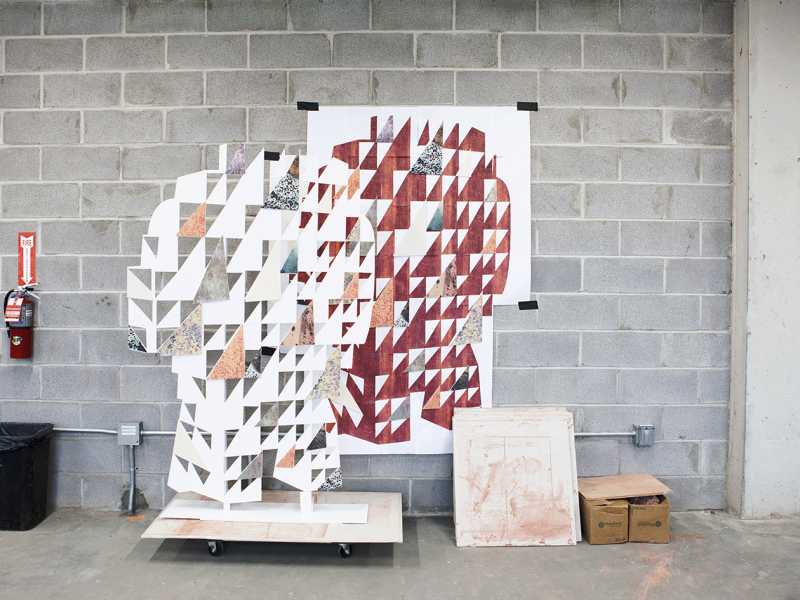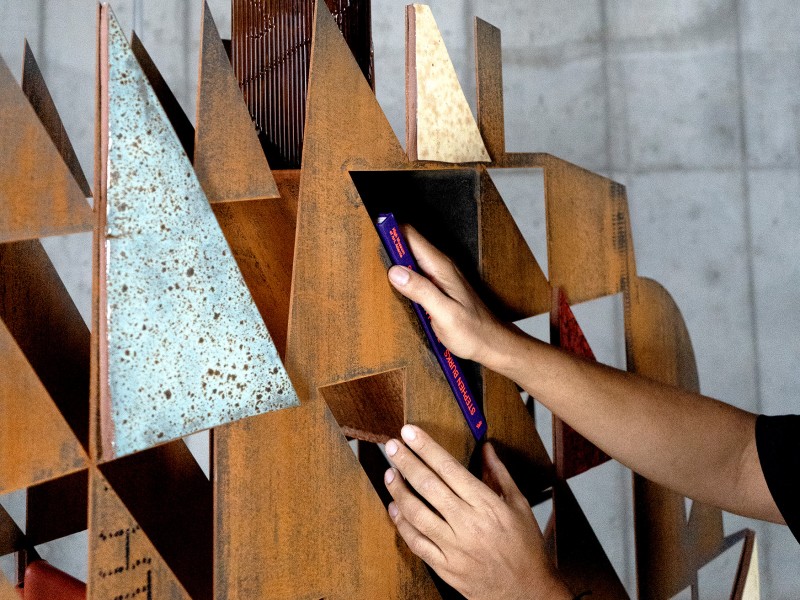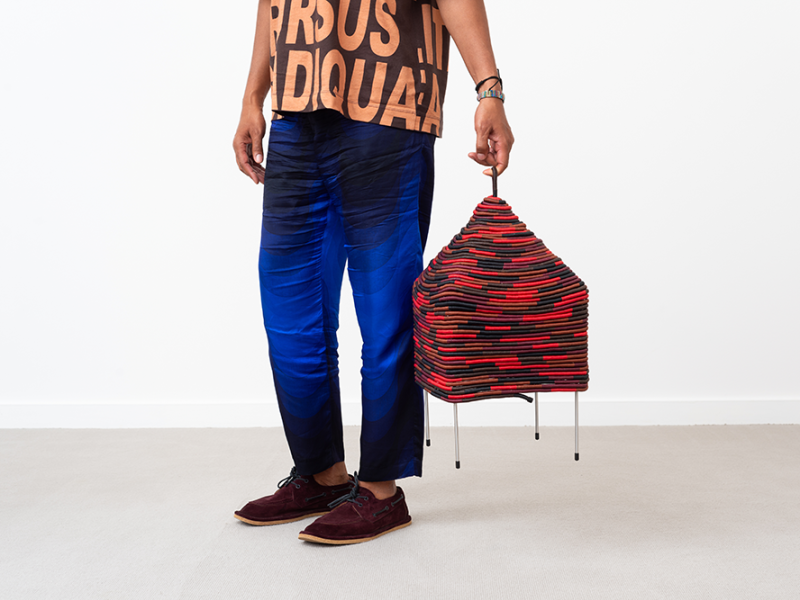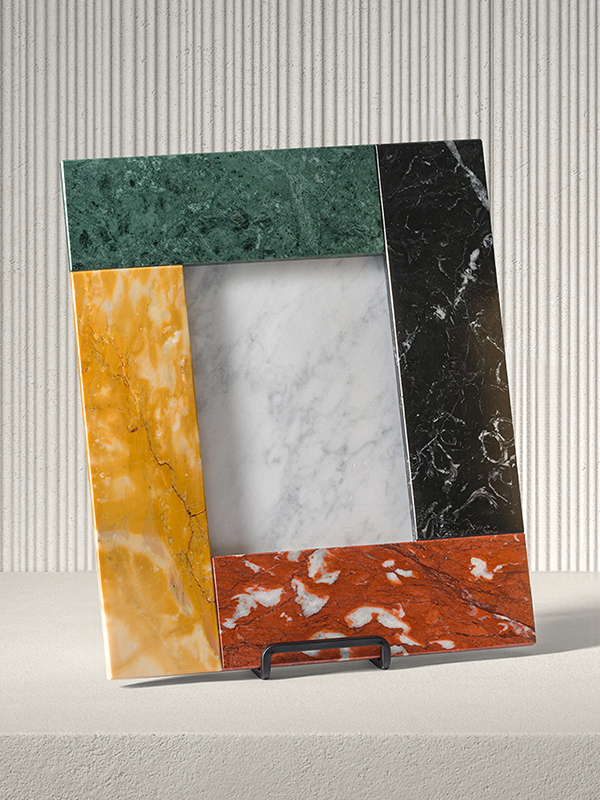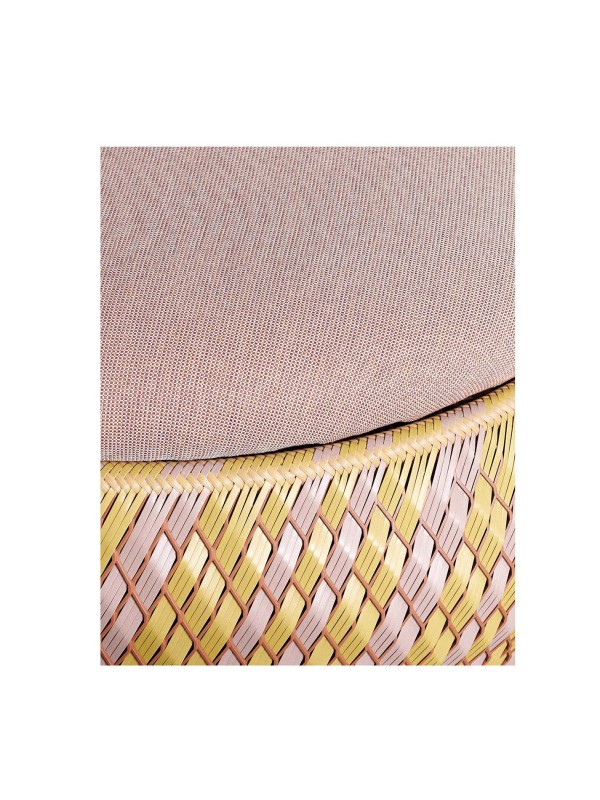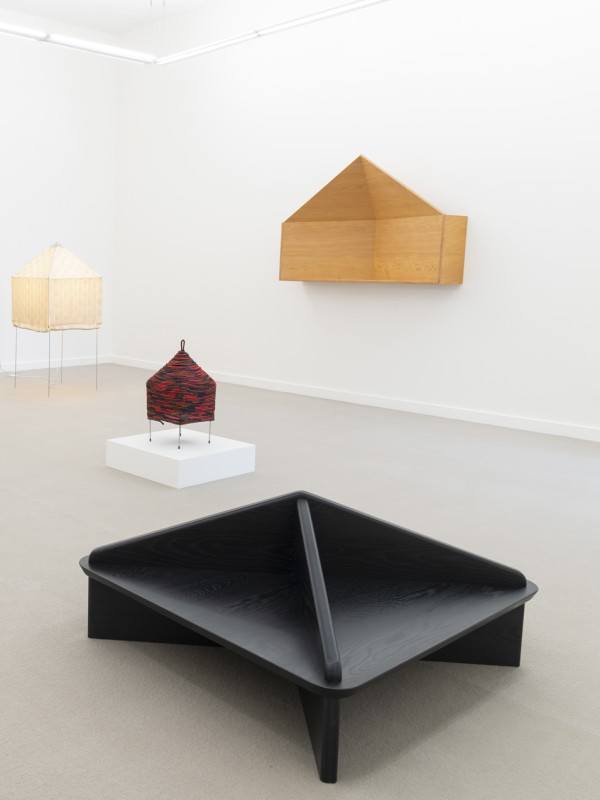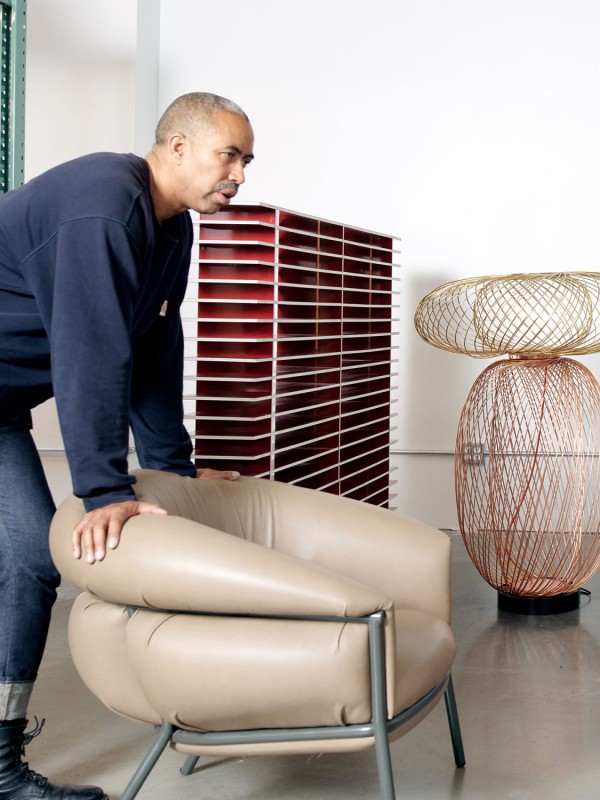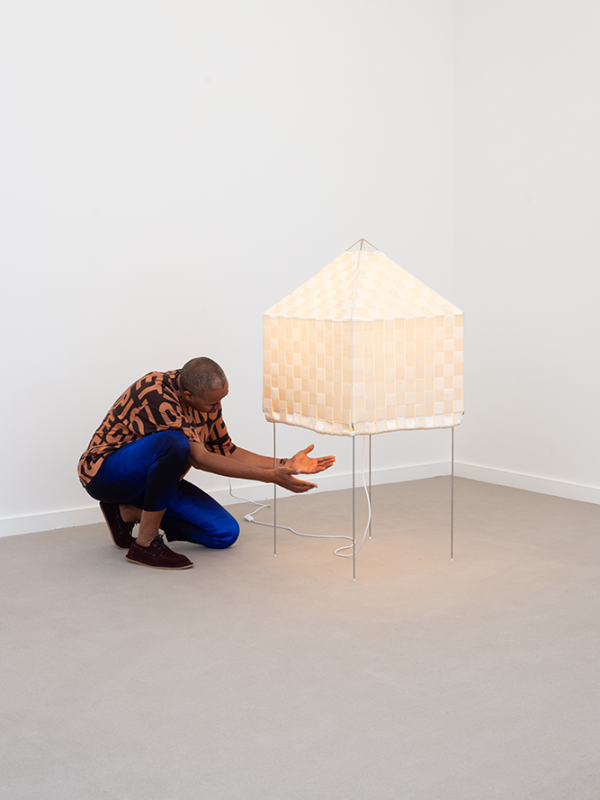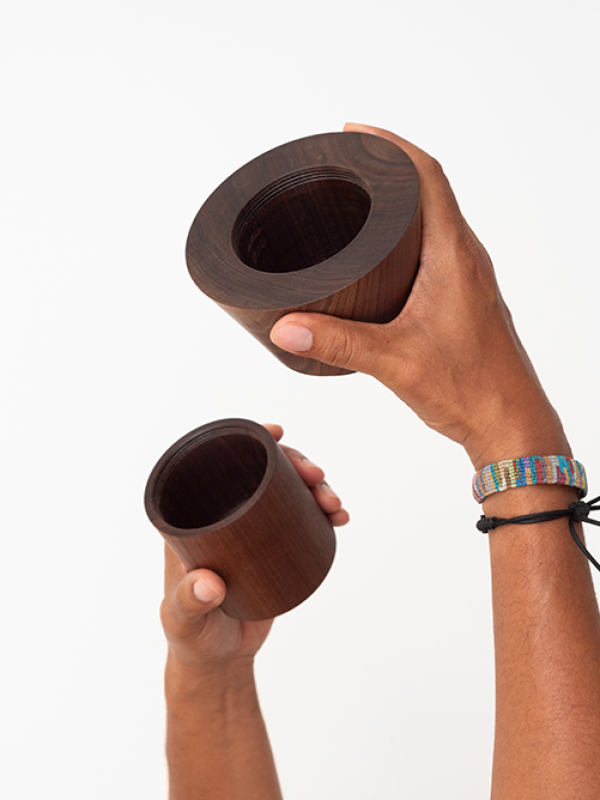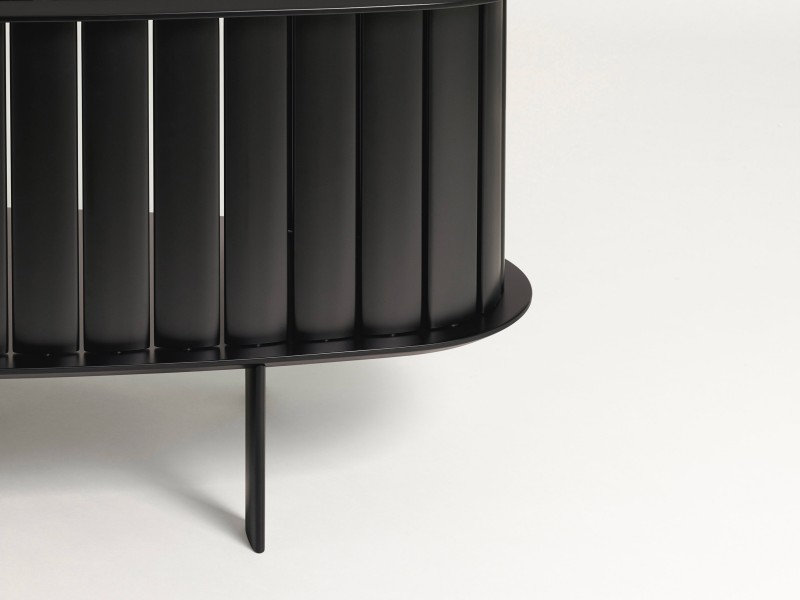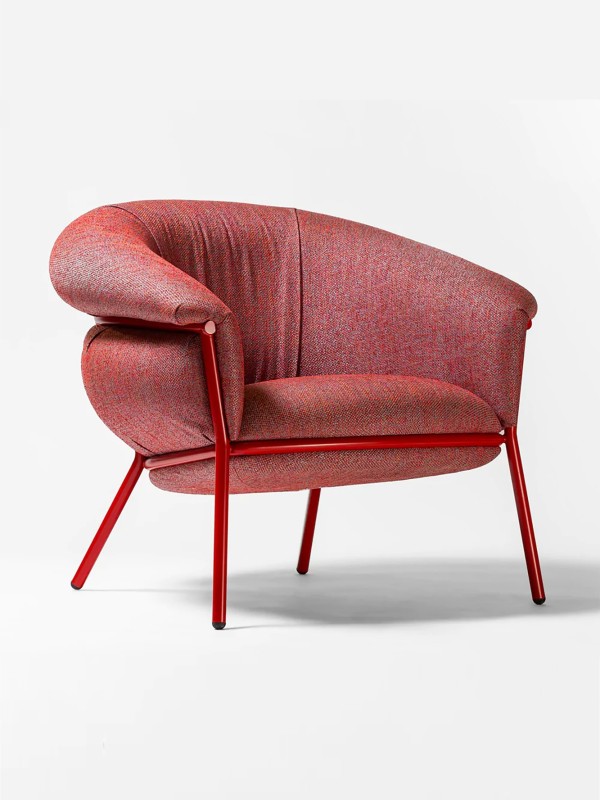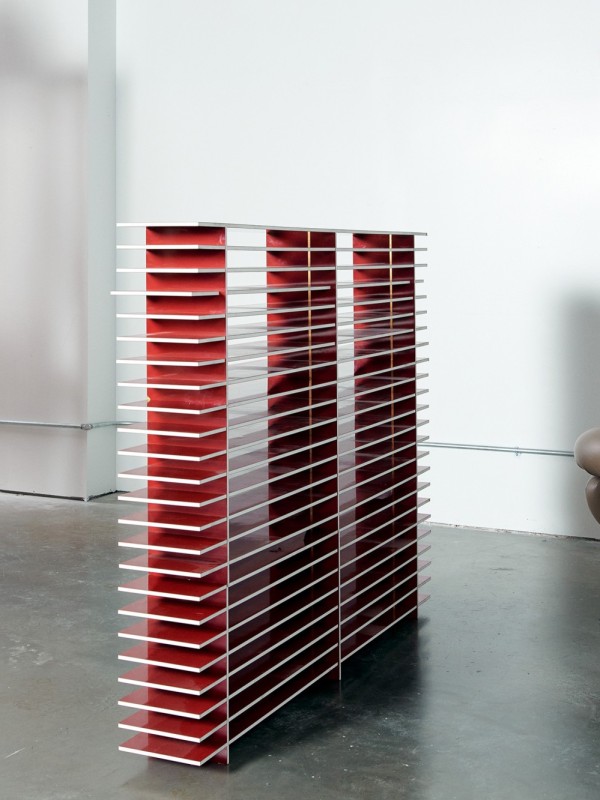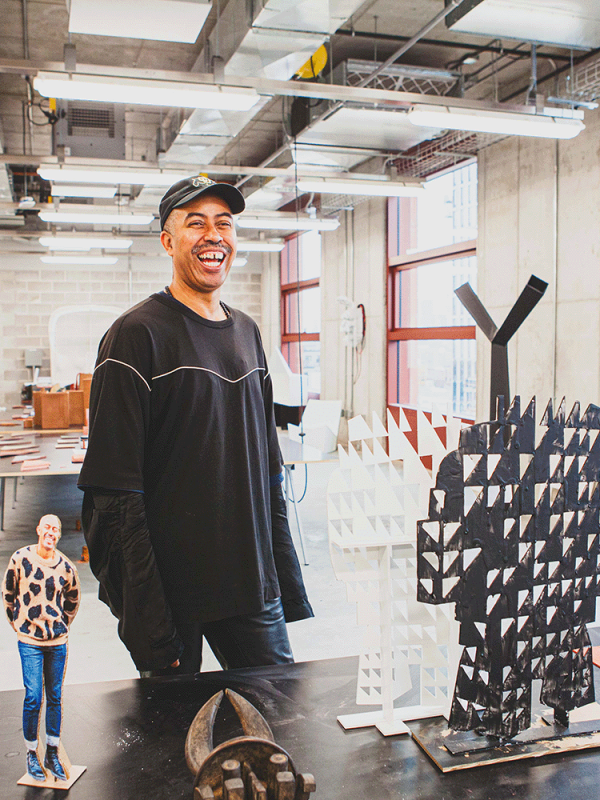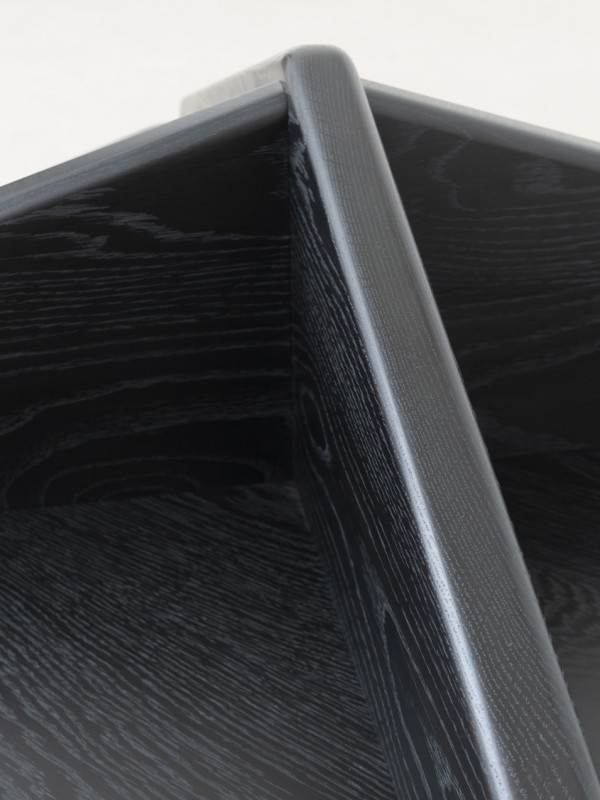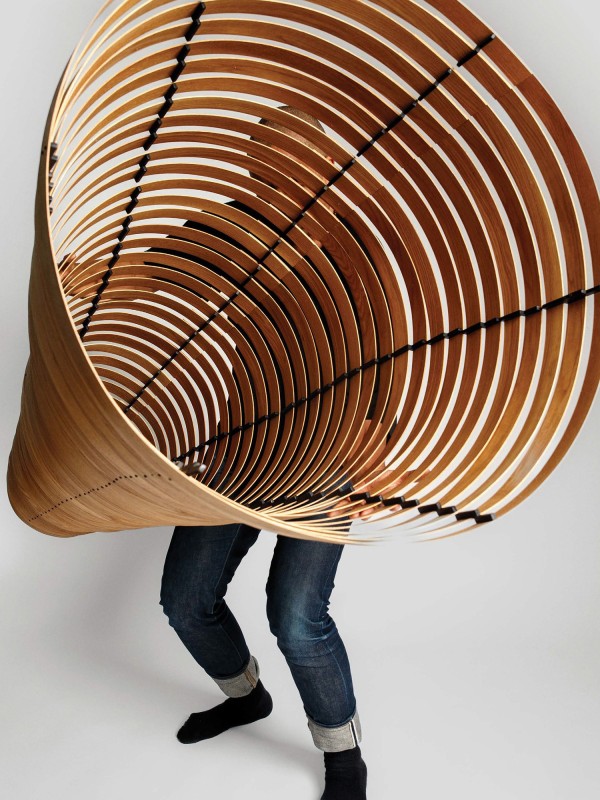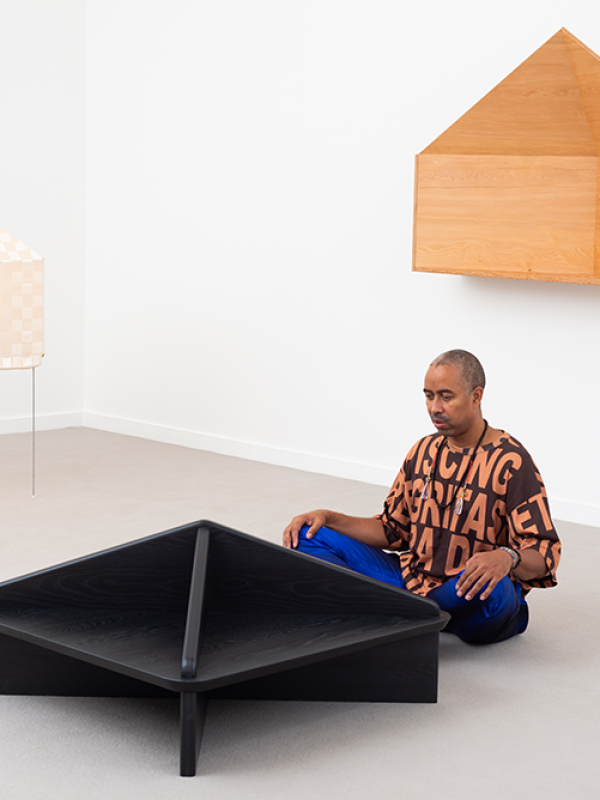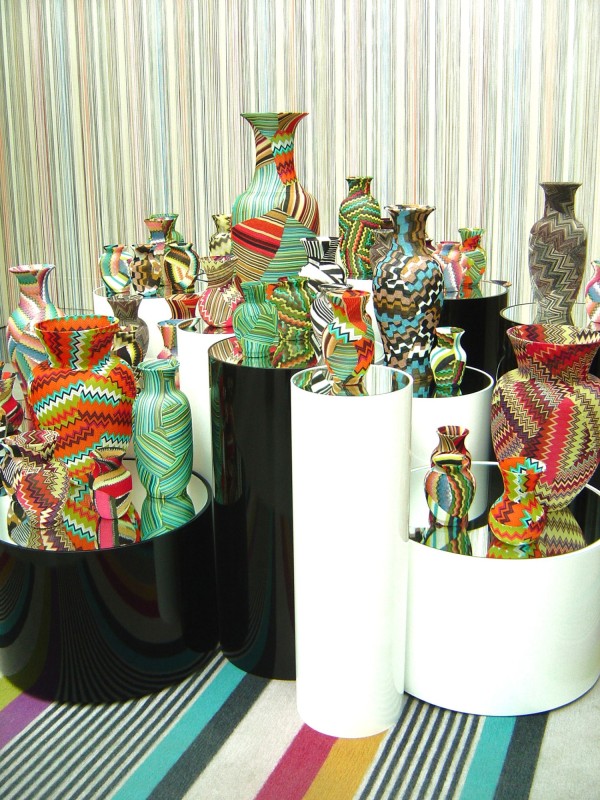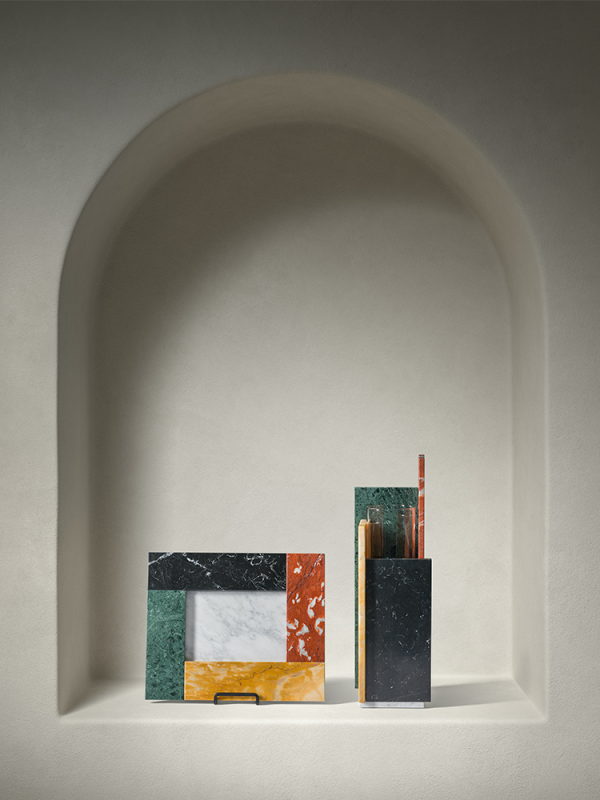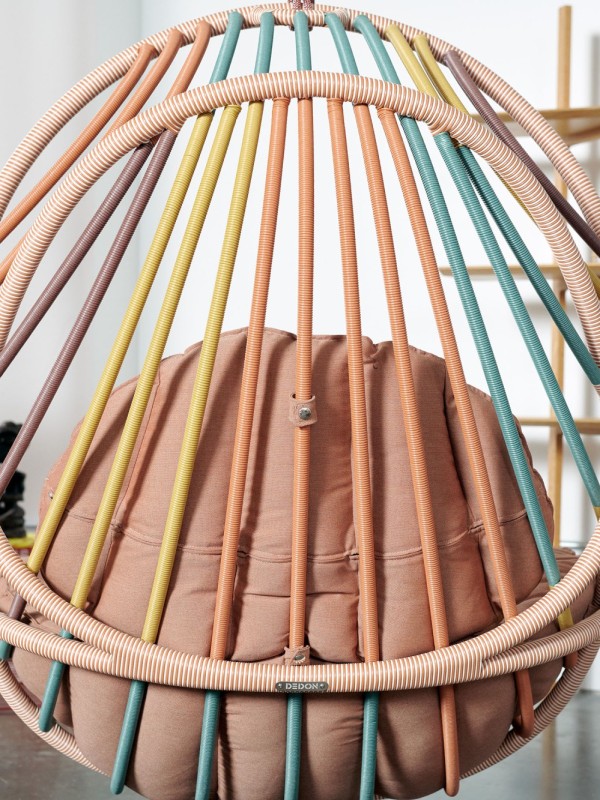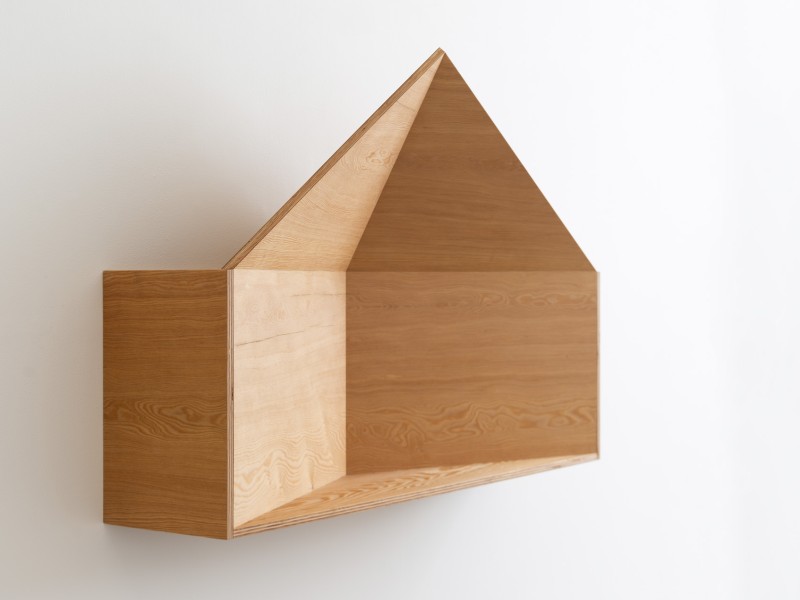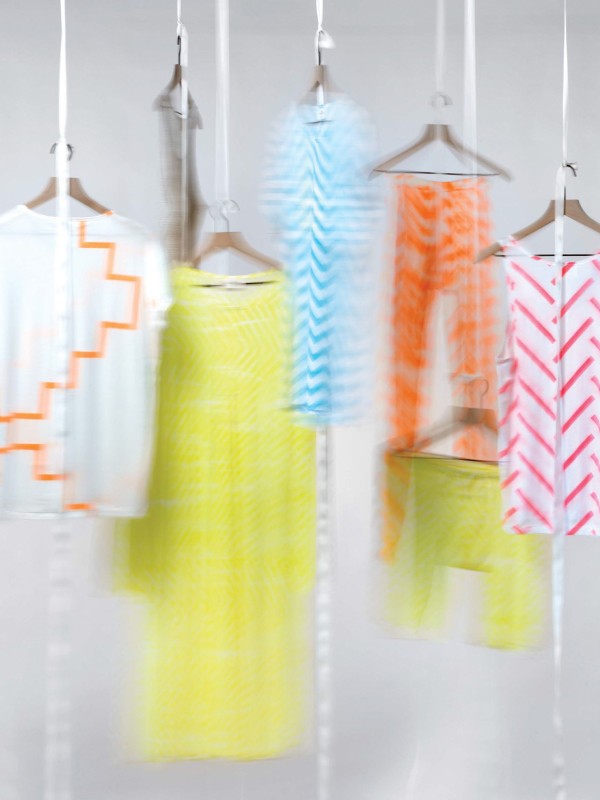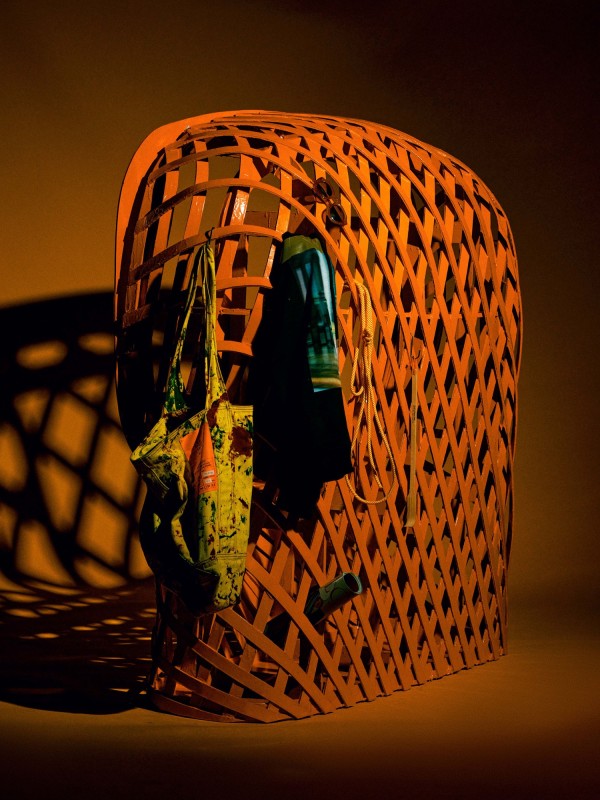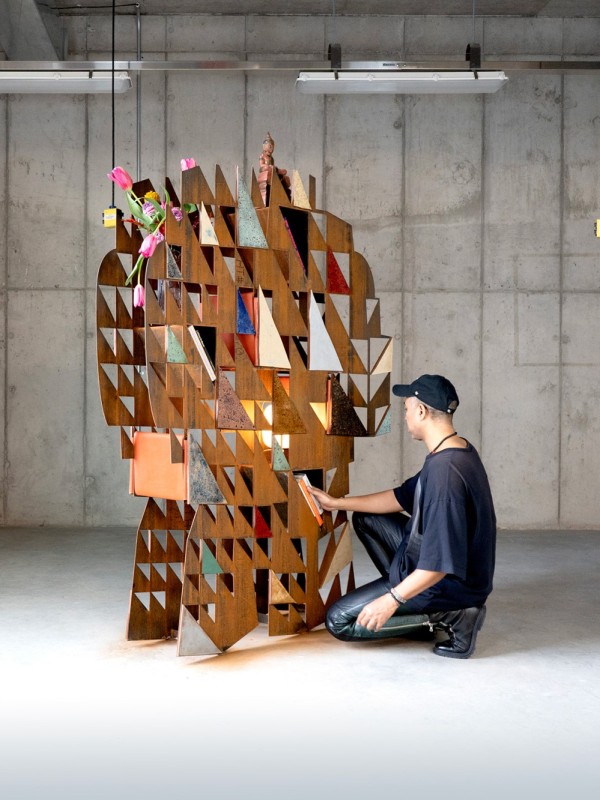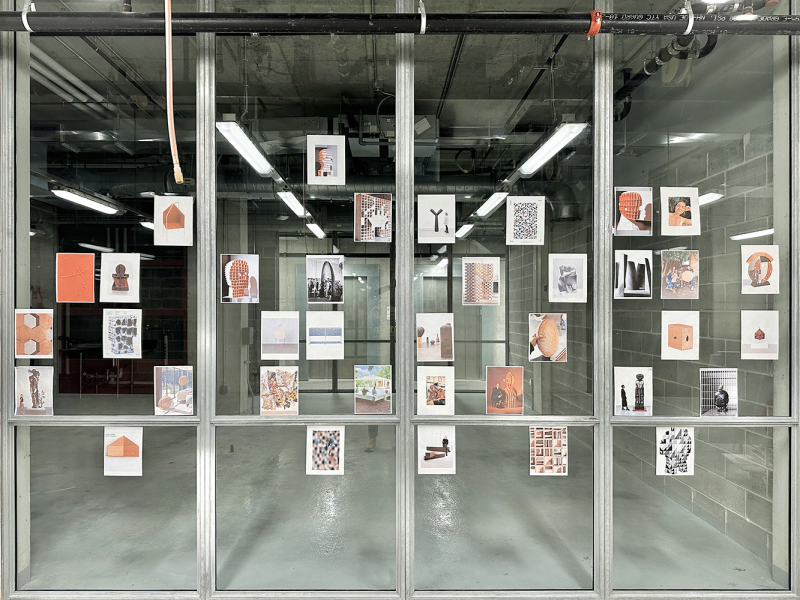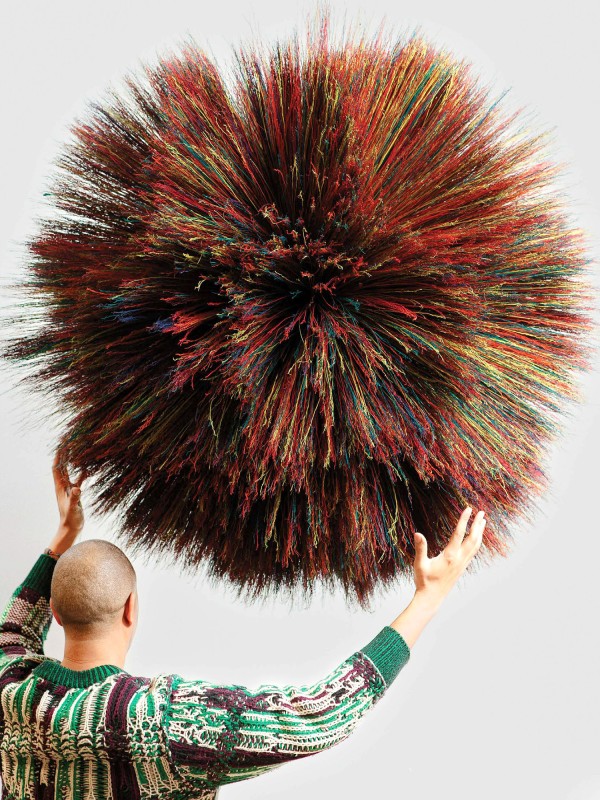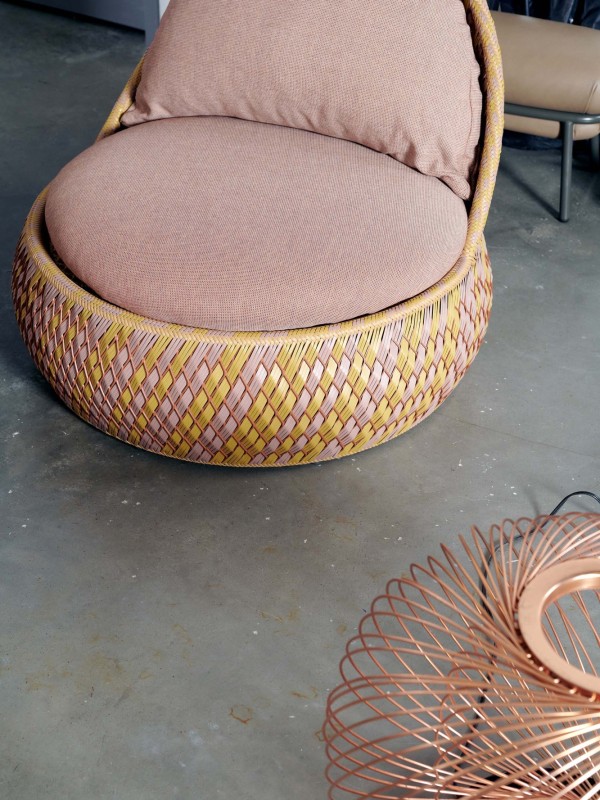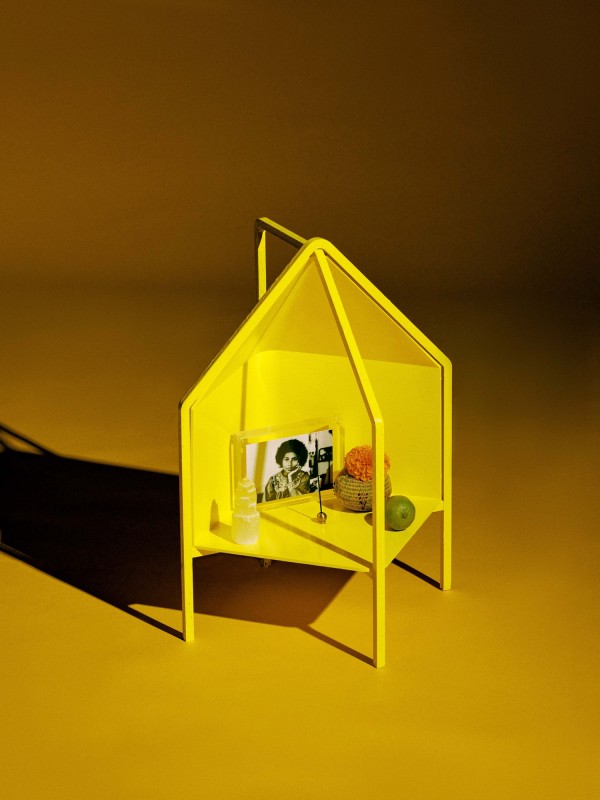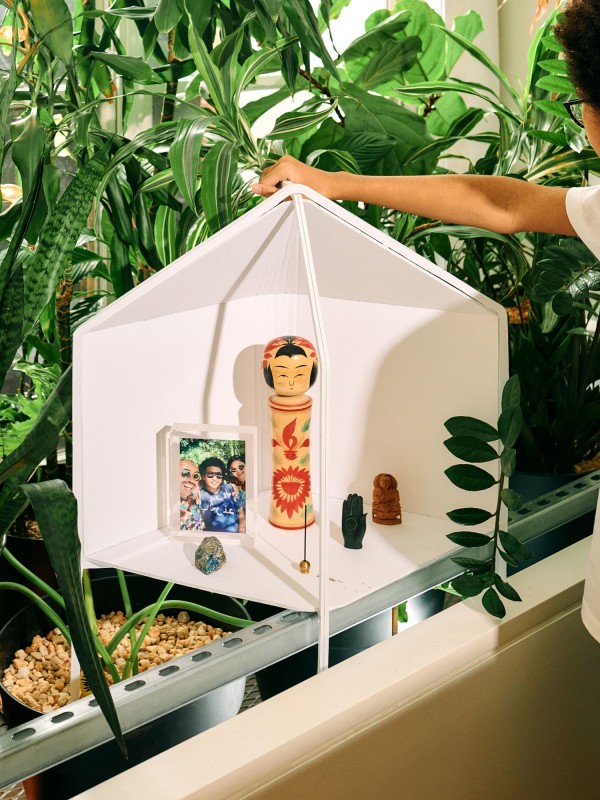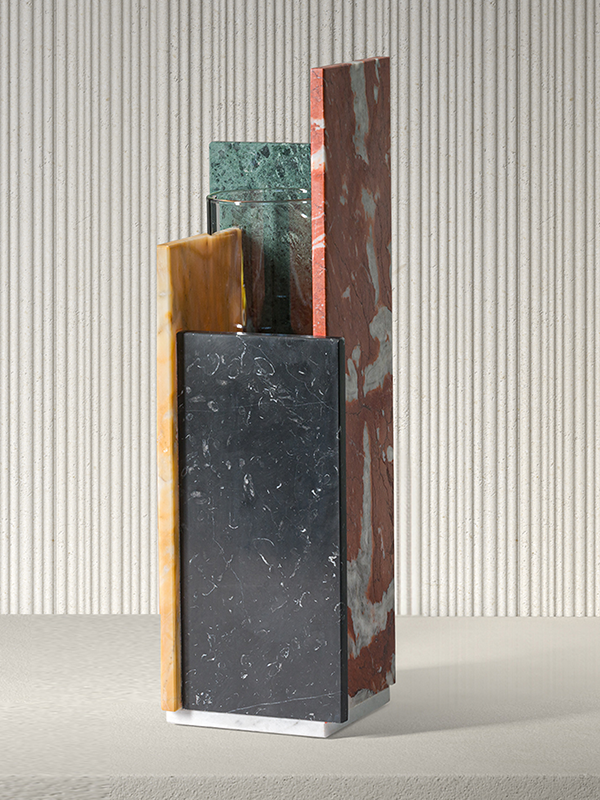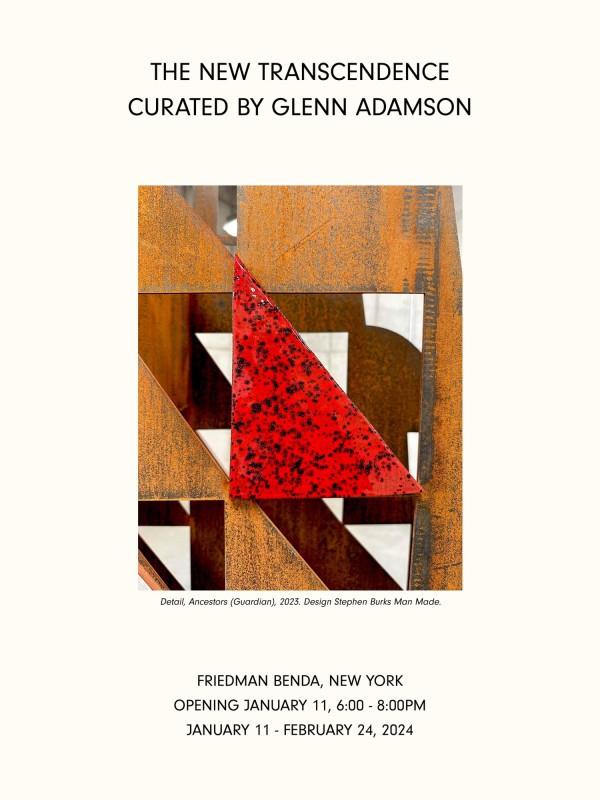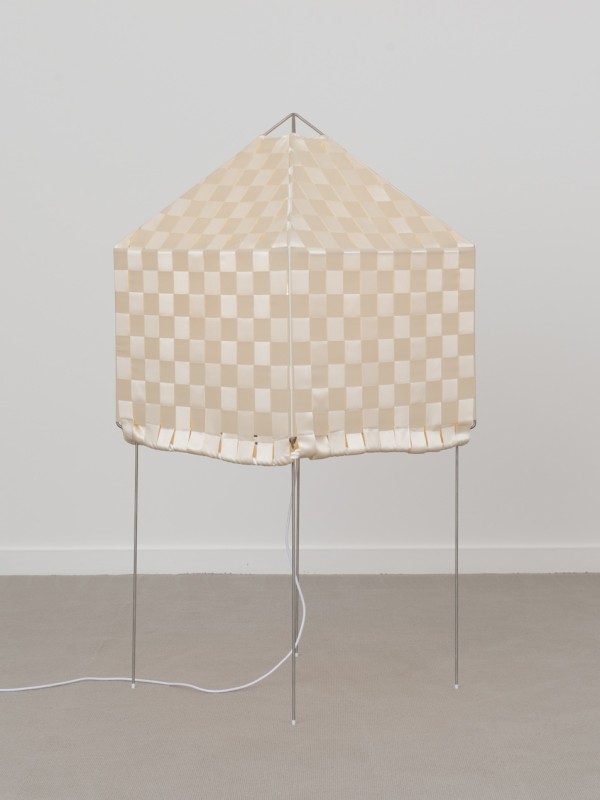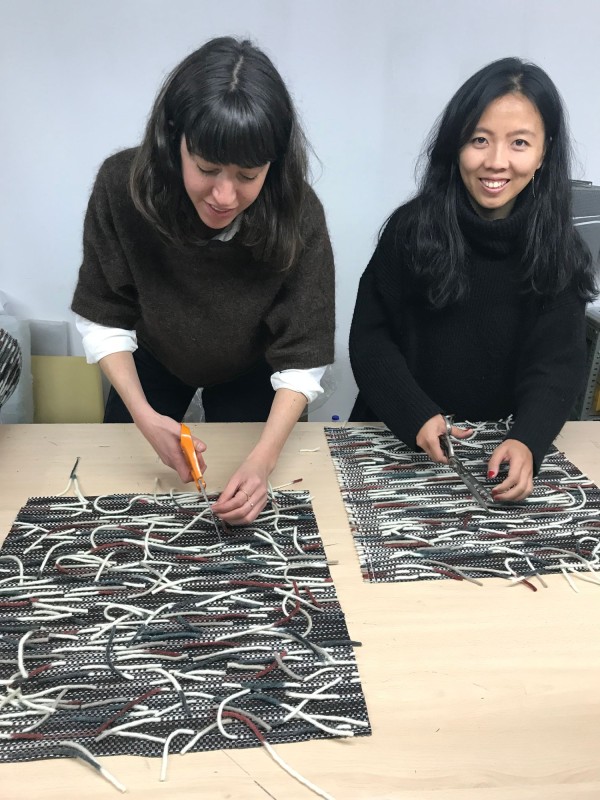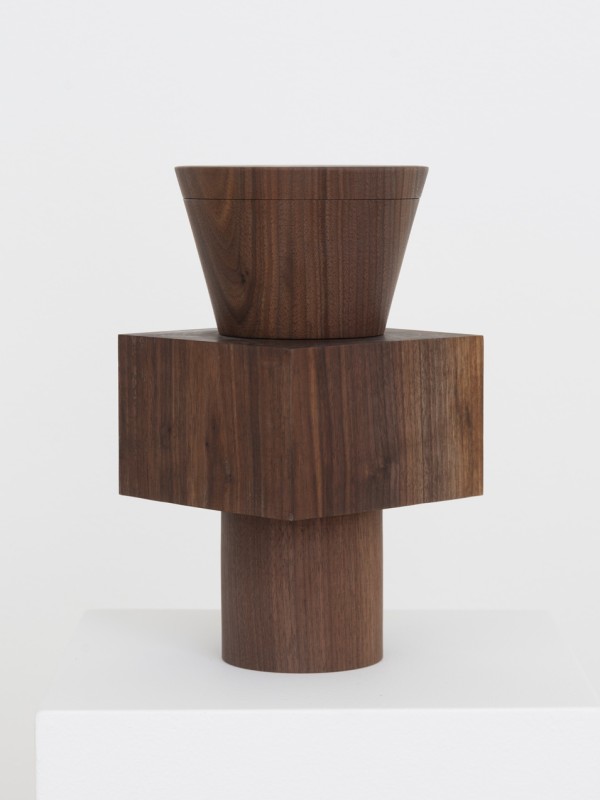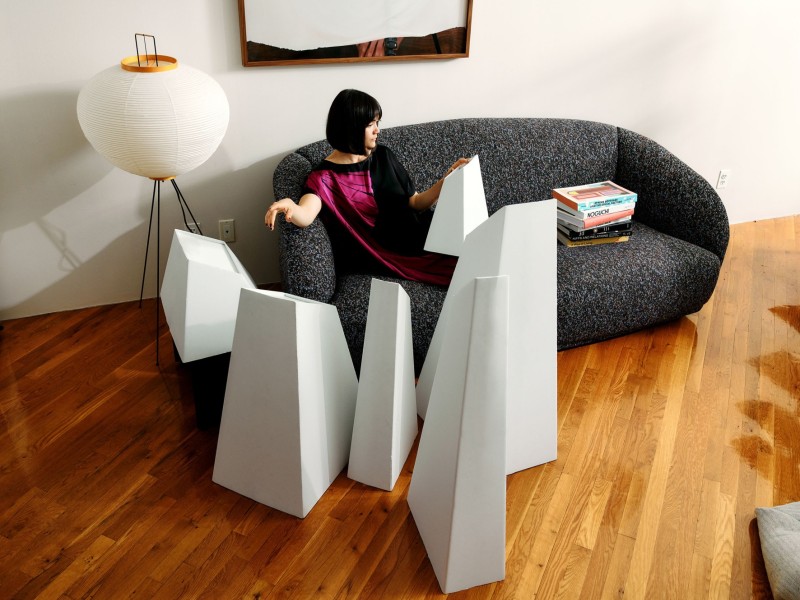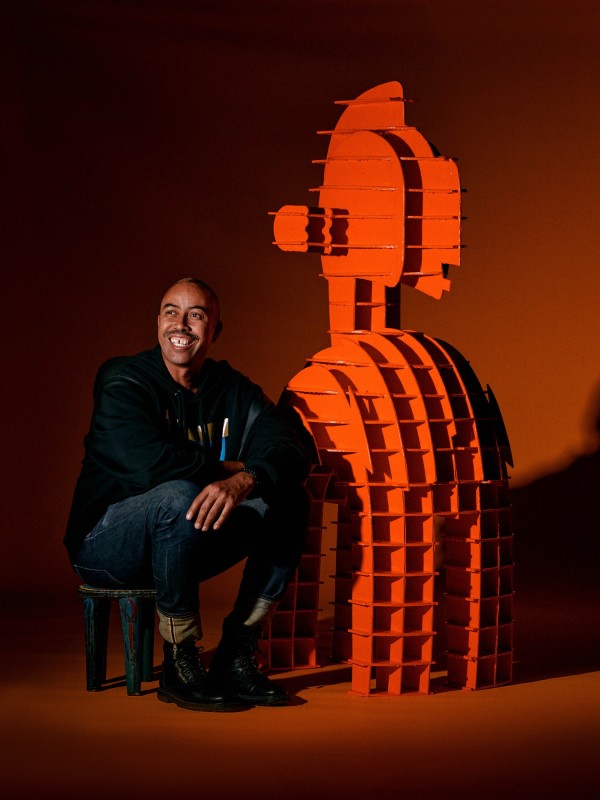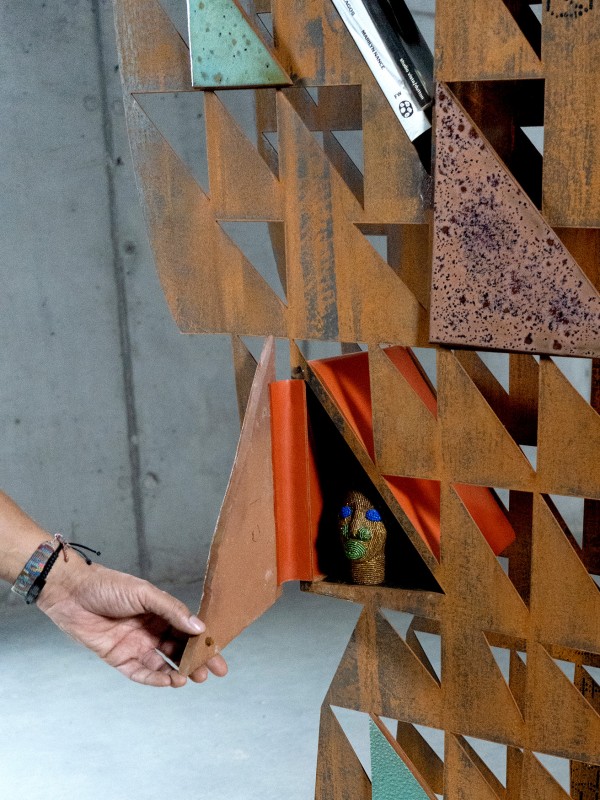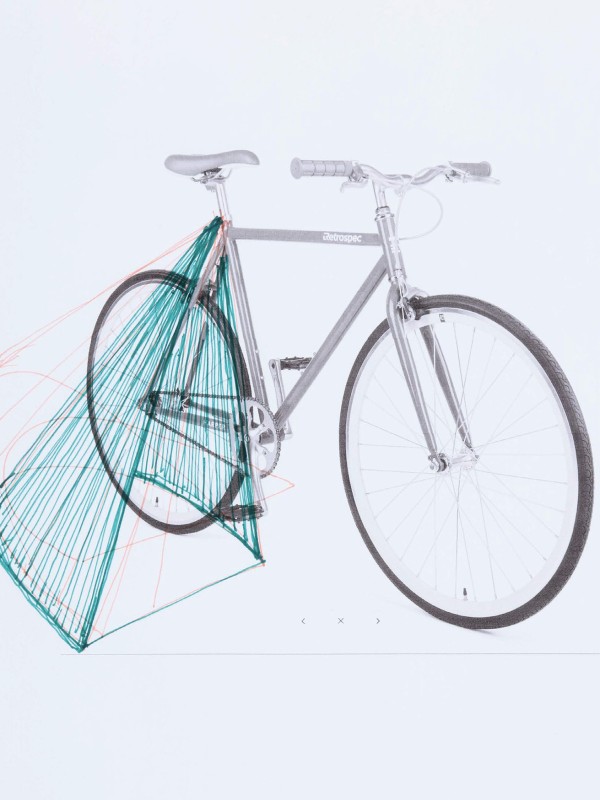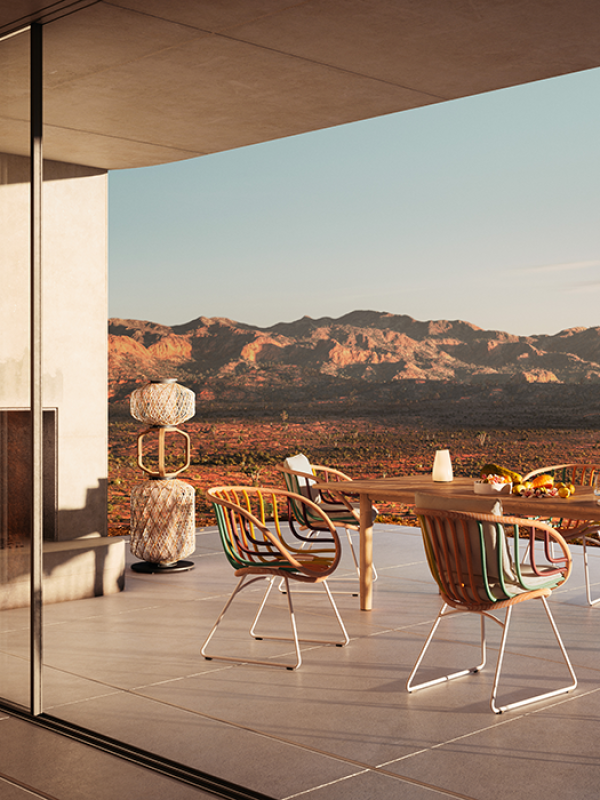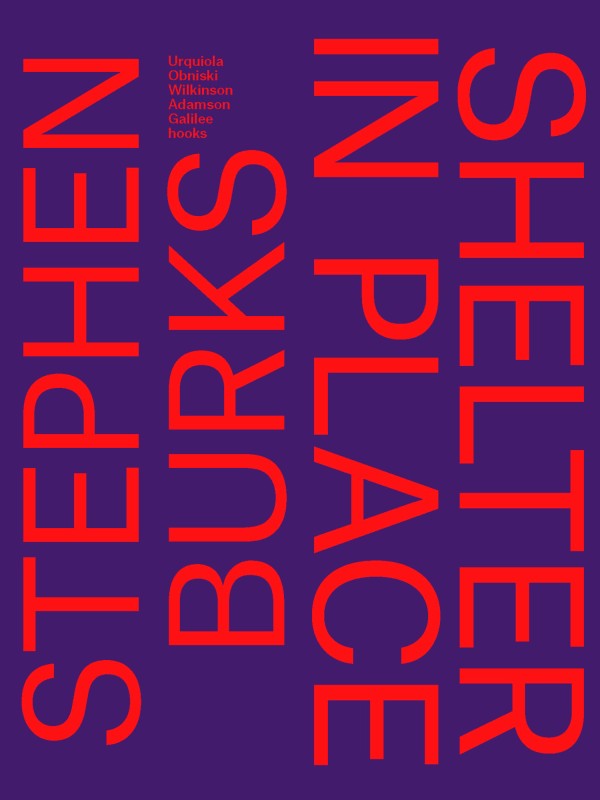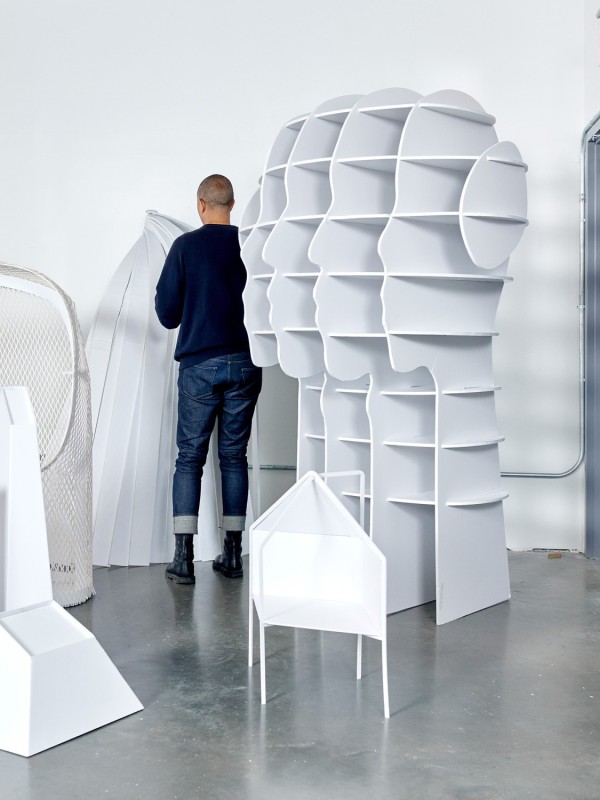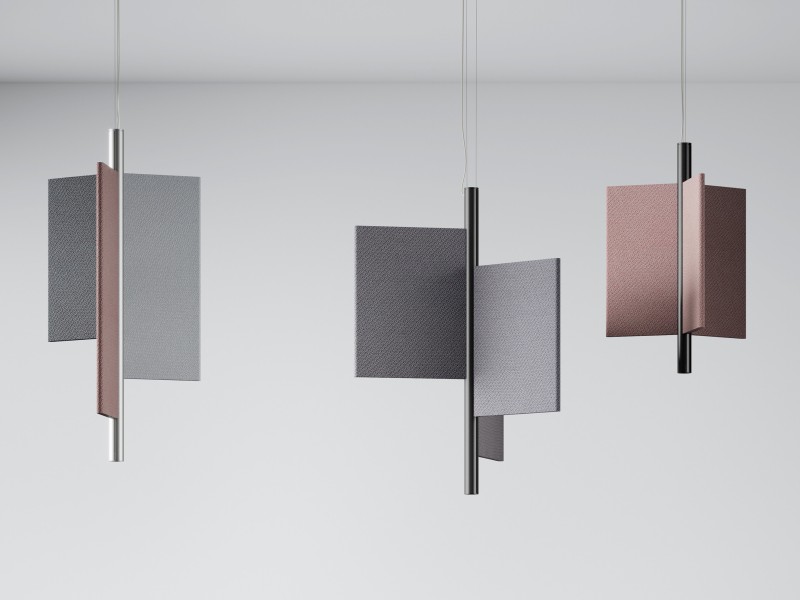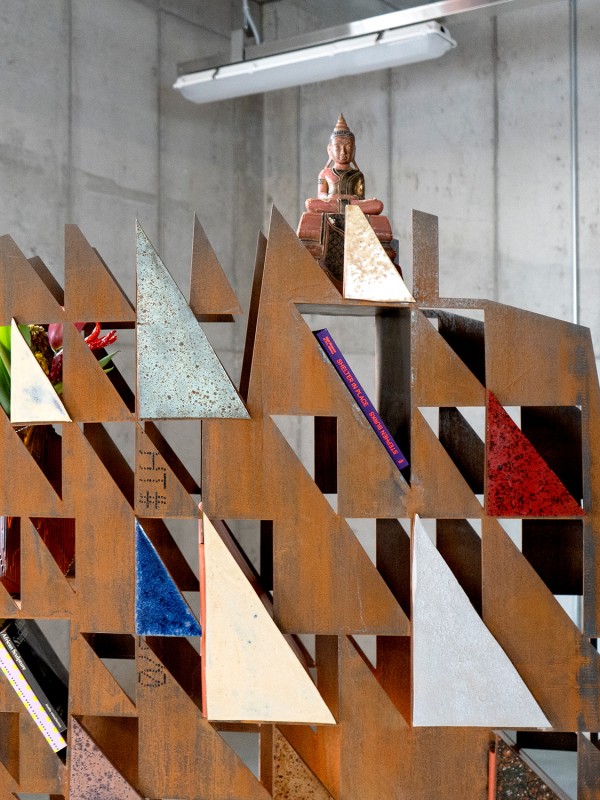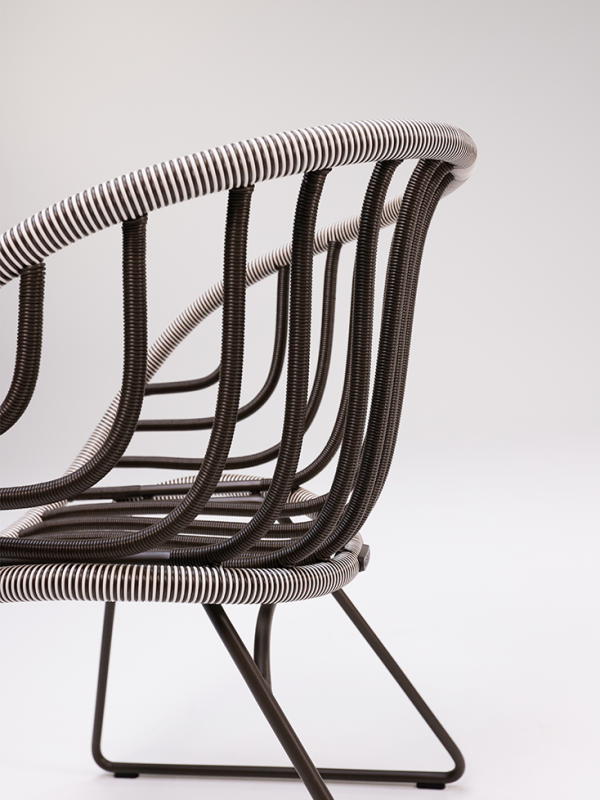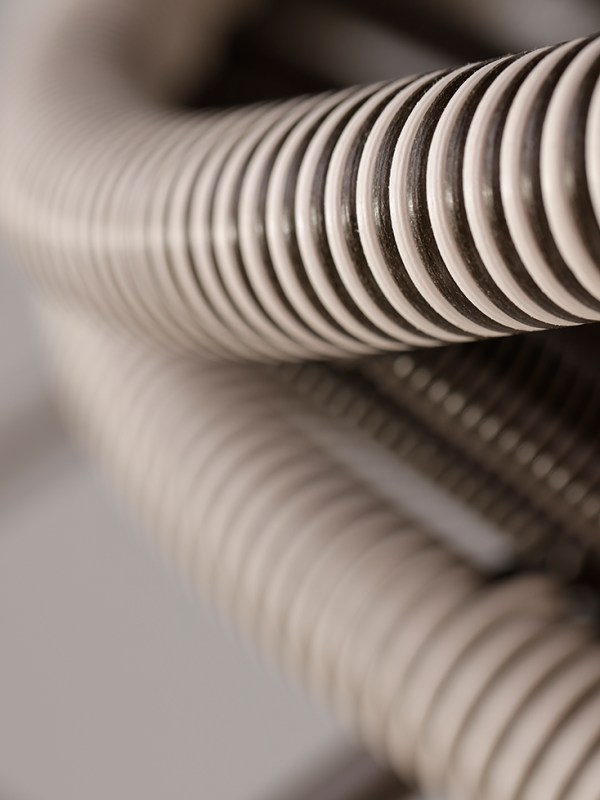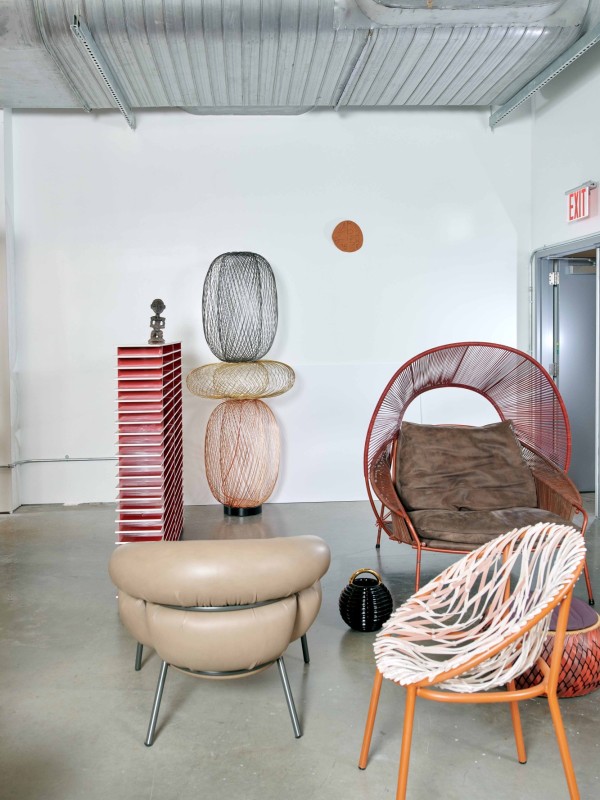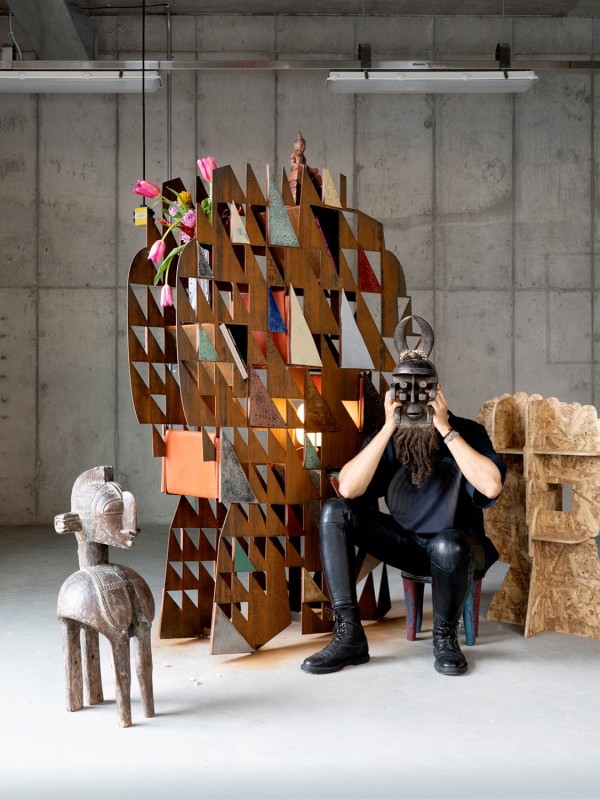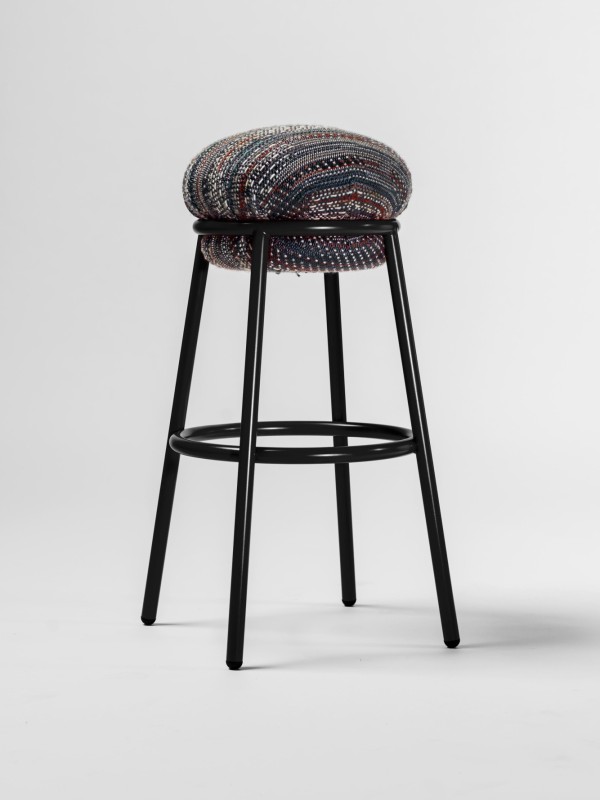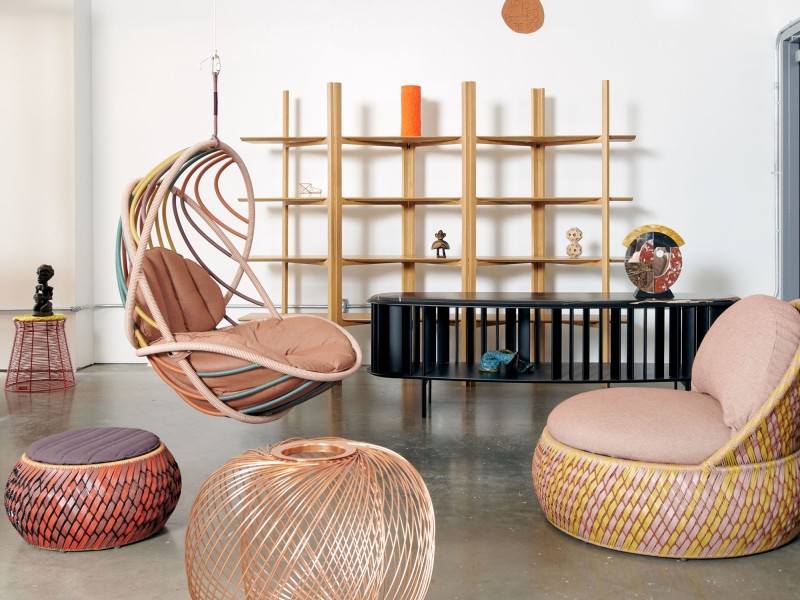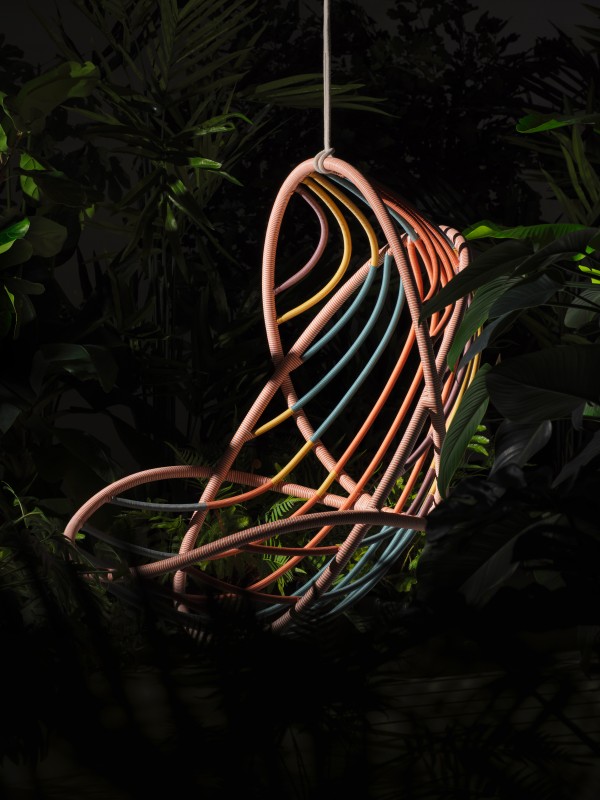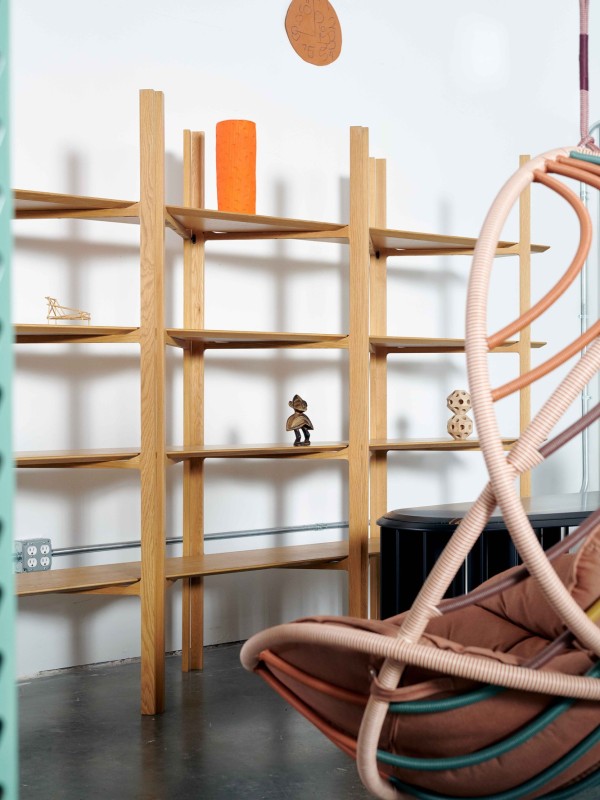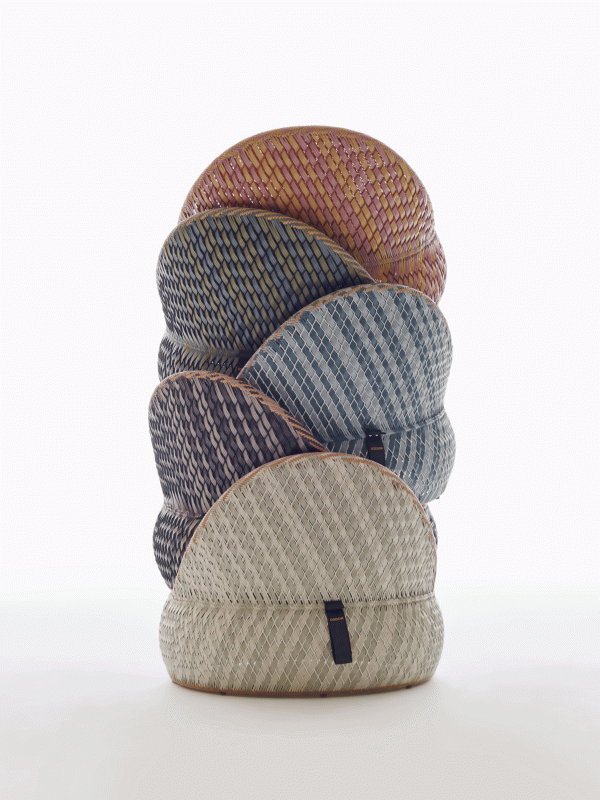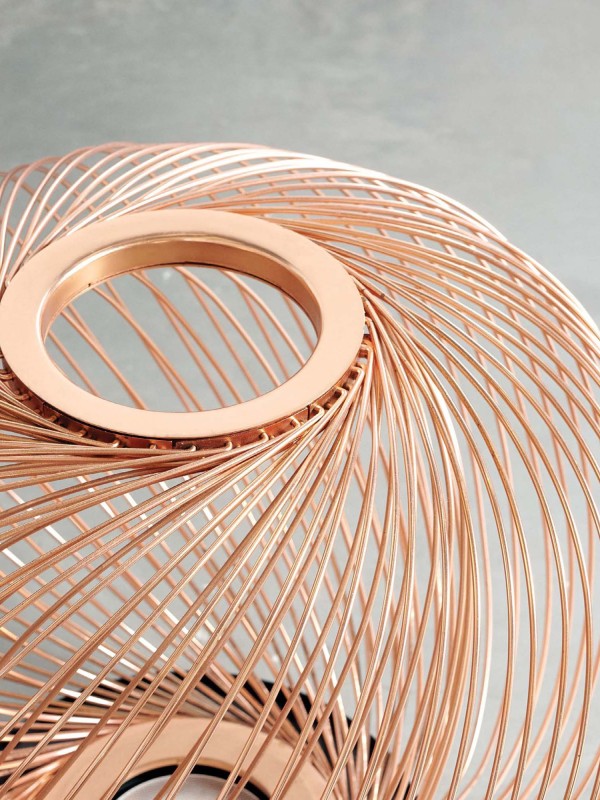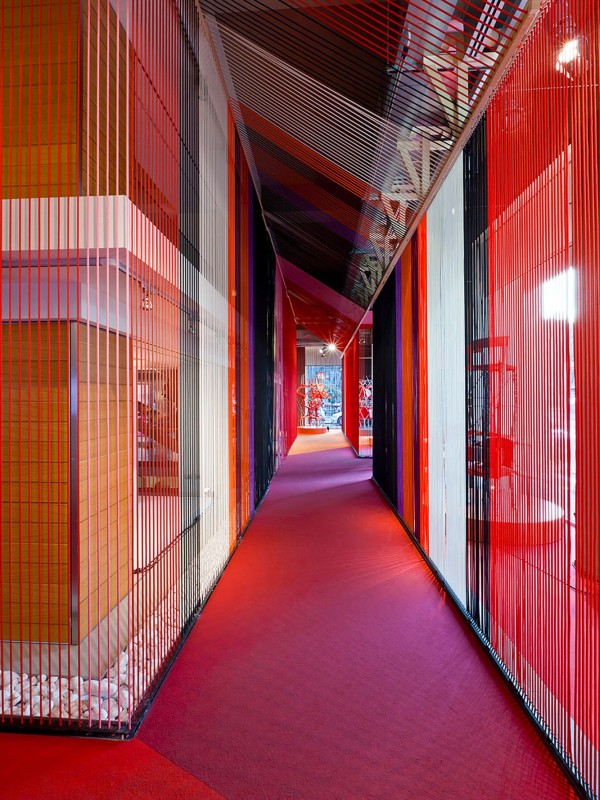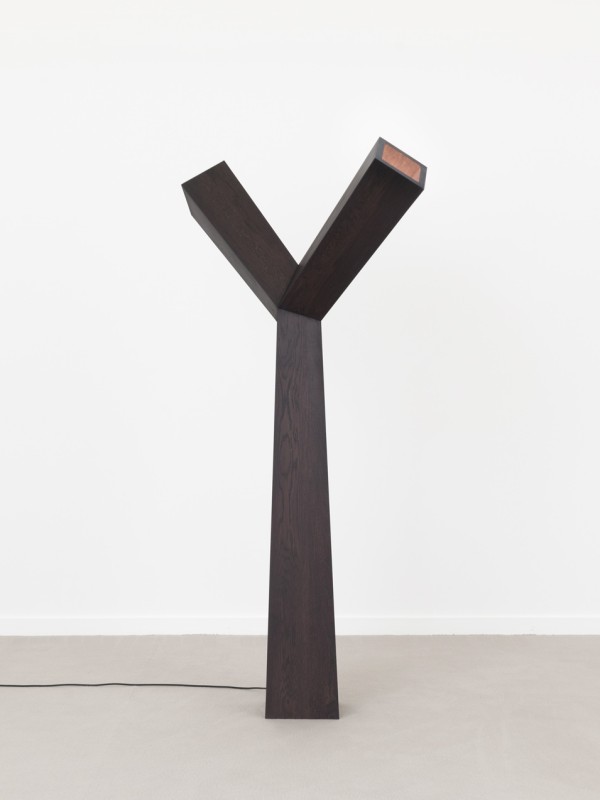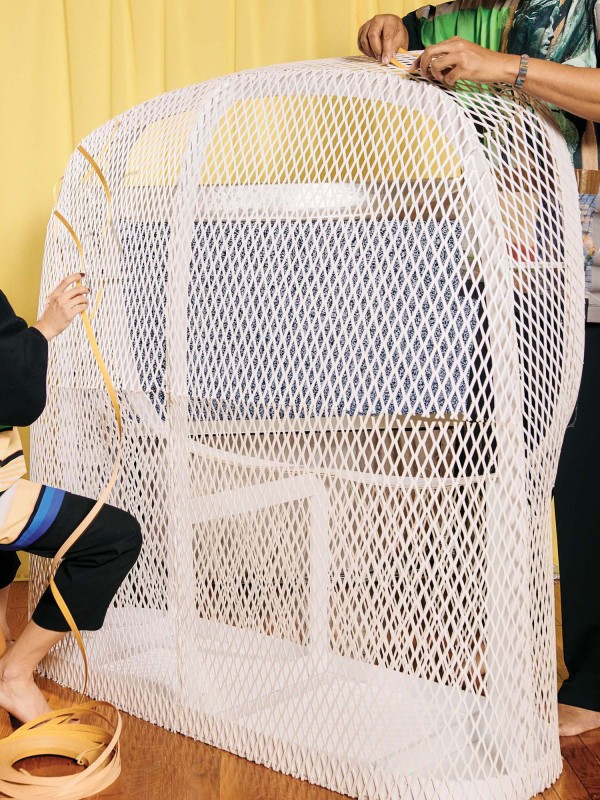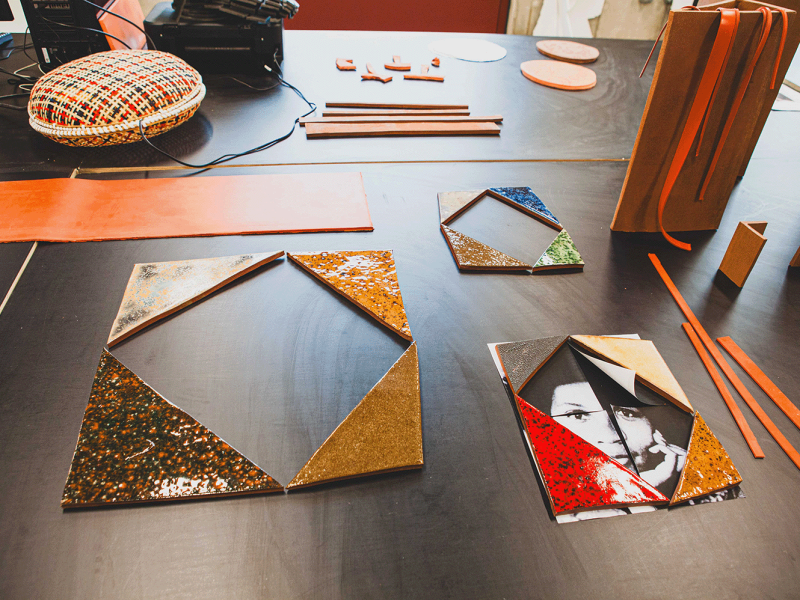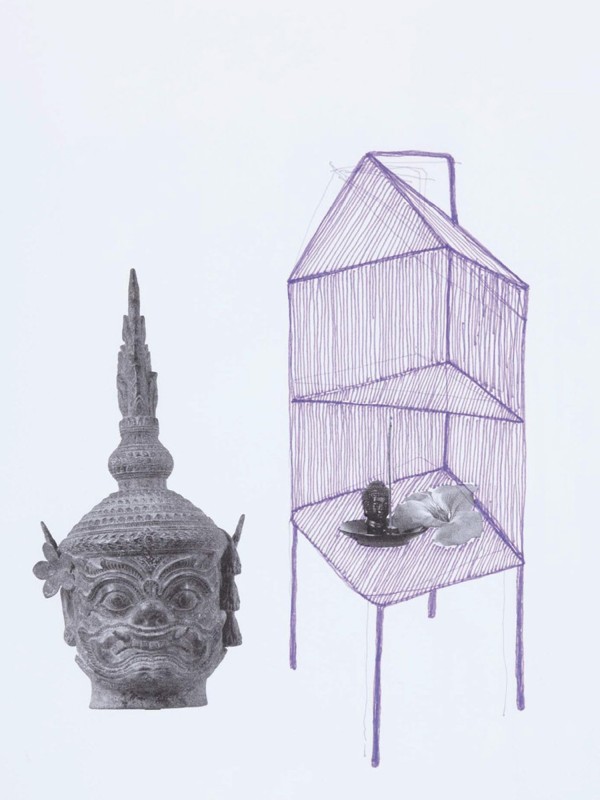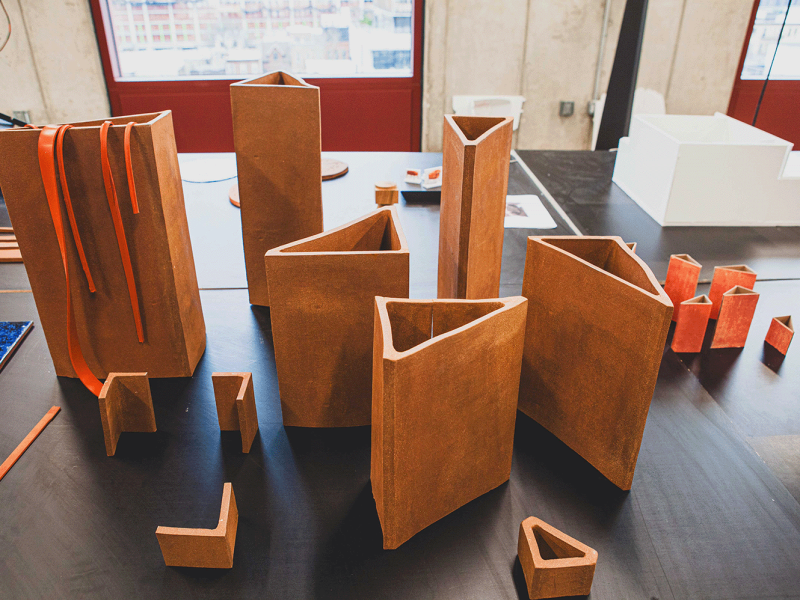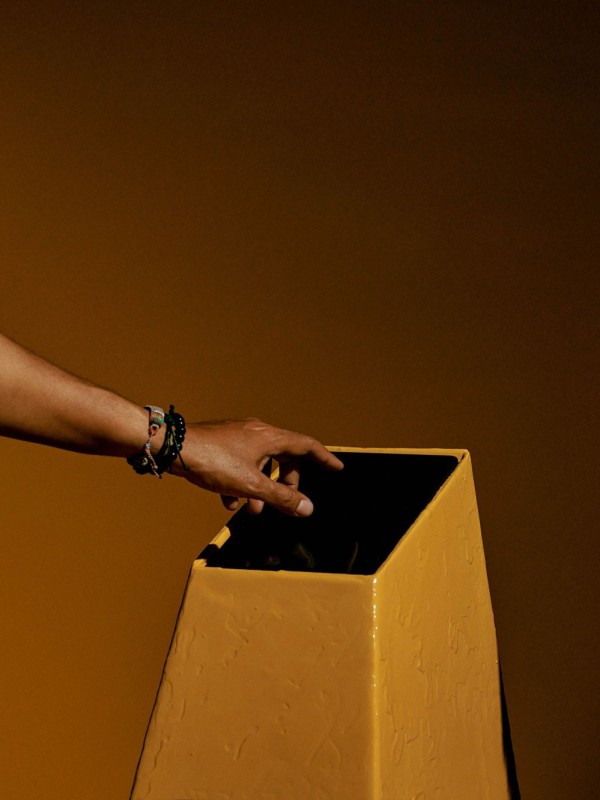About
Stephen Burks Man Made is a hands-on collaborative design studio deeply invested in the transformative power of craft techniques that challenge the limits of new technologies within industrial production.
We believe in a pluralistic vision of design that is inclusive of all cultural perspectives and backgrounds.
We bring the hand to industry through a community-driven, workshop-based practice.
Our projects include furniture, lighting, interiors, exhibitions, and product design.
We are Stephen Burks (Principal), Malika Leiper (Cultural Director), Vara Yang (Design Consultant), and Fridolin Jeger (Design Assistant).
Our solo exhibition Stephen Burks: Shelter in Place, formerly at the High Museum of Art in Atlanta (September 16, 2022 - March 5, 2023) is part acclaimed mid-career survey and part commissioned speculative project presenting the last decade of professional practice alongside new expressions of radical domesticity through handcrafted industrial design.
Most recently, Stephen Burks: Spirit Houses opened at Volume Gallery in Chicago and Stephen Burks: Shelter in Place (November 19. 2023 - April 16, 2024) opened at the Philadelphia Museum of Art where Stephen became the first African American to receive the Collab Design Excellence Award.
Follow us on Instagram @stephenburksmanmade and contact us at info@stephenburksmanmade.com.
Stephen Burks
Chicago native, Stephen Burks is an industrial designer, product development consultant, and educator whose innovative approach to design synthesizes craft, community, and industry. Independently and through association with various non-profits, he has collaborated with artisans and craftspeople in over ten countries on six continents. His socially engaged practice seeks to broaden the limits of design consciousness by challenging who benefits from and participates in contemporary design.
Stephen and his studio, Stephen Burks Man Made, have been commissioned by many of the world’s leading design-driven brands to develop collections that engage hand production as a strategy for innovation to express a more pluralistic vision of design including BD Barcelona, Cappellini, Dedon, MASS Design Group, Missoni, & Roche Bobois.
He has had solo exhibitions and led curatorial projects at the Studio Museum in Harlem (Stephen Burks Man Made, 2011), the Museum of Art & Design (Stephen Burks, Are You a Hybrid, 2011), and the High Museum of Art (Stephen Burks: Shelter in Place, 2022).
He has been visiting faculty and a strategic consultant to academic institutions around the globe and taught architecture and design at Berea College, Columbia University GSAPP, ECAL, the University of Arkansas Fay Jones School of Architecture & Design, and the Harvard University Graduate School of Design.
Stephen is the only African-American to win the Smithsonian Cooper Hewitt National Design Award in Product Design and the only industrial designer to be awarded the prestigious Loeb Fellowship at the Harvard Graduate School of Design.
Malika Leiper
Originally from Cambodia, Malika Leiper is interested in the culture of design across various disciplines with a particular focus on emergent contexts in Southeast Asia.
After completing her master’s in urban planning at Harvard’s Graduate School of Design, she consulted with restaurants, non-profits, local governments, and museums on research and strategies to build creative cultural capacity, often through public programming and community engagement.
She approaches design as a collaborative process of translating knowledge and insights from different worlds into one common language through technical, moral and utopian applications.
Most recently, Malika has contributed to Disegno Journal #34 as a Het Nieuwe Instituut inaugural emerging writing fellow with her first published short story, When The Words Don't Exist.
Vara Yang
Vara Yang joined Stephen Burks Man Made as an industrial designer in New York in 2017.
Before working at Stephen Burks Man Made, she worked with several startups helping them bring their products and services to the market, including smart home devices, smartwatches, smart jewelry, and 3D printers.
Now an independent consultant based in Rotterdam, she continues to work with the studio on projects at various scales from furniture design to packaging to exhibitions.
Vara received her bachelor’s in design engineering from National Cheng Kung University in Taiwan and her master’s in Industrial Design from the Rhode Island School of Design.
thinking
When The Words Don't Exist
By Malika Leiper for Disegno #34 x Het Nieuwe Instituut Design Drafts #1
Het Nieuwe Instituut’s 2022 Design Drafts programme, in collaboration with Disegno journal (London), announced an open call for up-and-coming design writers to investigate and draft what it means to reflect on design today. The open call invited applicants to propose a piece of writing around the theme, “Is design just a game?”. Six proposals have now been selected by an international jury, whose authors will create a piece of long-form paid writing supported by writing and editing workshops with the Disegno and Het Nieuwe Instituut teams.

Malika Leiper’s proposal states that to profess design is just a game is a position of Euro- and Anglo-centric privilege. If design is indeed a game, with rules establishing winners and losers, then its parameters are determined by proximity to power, which has historically been, and continues to be, centralised in Europe and North America. In her contribution, Malika Leiper therefore asks: “How do we opt out of the game? Why is this needed? And where might emergent design languages stem from?” And, since there is no word for “designer'' in her mother tongue Khmer, “How to begin writing about design if the word does not even exist?” Malika will engage in qualitative and quantitative research to illustrate the unevenness of the enterprise of knowledge production in design, alongside data visualisations and photographic aids.

In 1953, King Sihanouk declared Cambodia’s independence, bringing an end to the ninety year old protectorate of France. Vann Molyvann, a student living abroad, who would go on to articulate the aspirations of this post-colonial modern nation as state architect and head of public works, received the news in Paris.
The oars of the wooden fishing boats dipped in and out of the river’s choppy waters. Down by the Seine, Vann sought refuge from the click-clocking of hurried wooden heels on pavement, whilst above him Quai Malaquais teemed with rush-hour traffic.
A word had taken shelter under his breath - or rather, a lack thereof.
There is no term for “designer” in my mother tongue. For the longest time, I’ve been using អ្នករចនា neak rochana. How do I speak about design when the words don’t exist? Vann pondered.
On this particular evening in the atelier, when Professeur Arretche launched into one of his frequent monologues on modernist design canon, Vann felt a familiar rupture inside of him - the same captive energy that befell him in the classrooms of the លីស៊ី lycée.
Perhaps it was because of his father’s letter he received that morning, a reminder of the immeasurable duty awaiting Vann as the first French-trained architect of Cambodia. Or perhaps it was the ease at which his classmate, Henri, slipped in and out of the conversation - the fluidity of his comments jeering in contrast to Vann’s immovable silence.
Still ruminating on the substance of this term, Vann remembered asking his mother its meaning once. “You know I don’t speak បារាំង barang”, she snapped at him in frustration.
And before she would even entertain the thought, it floated away, bobbing and dipping with the force of the currents. Like split coconuts in the water, the word was an empty vessel awaiting its delivery into diligent hands.
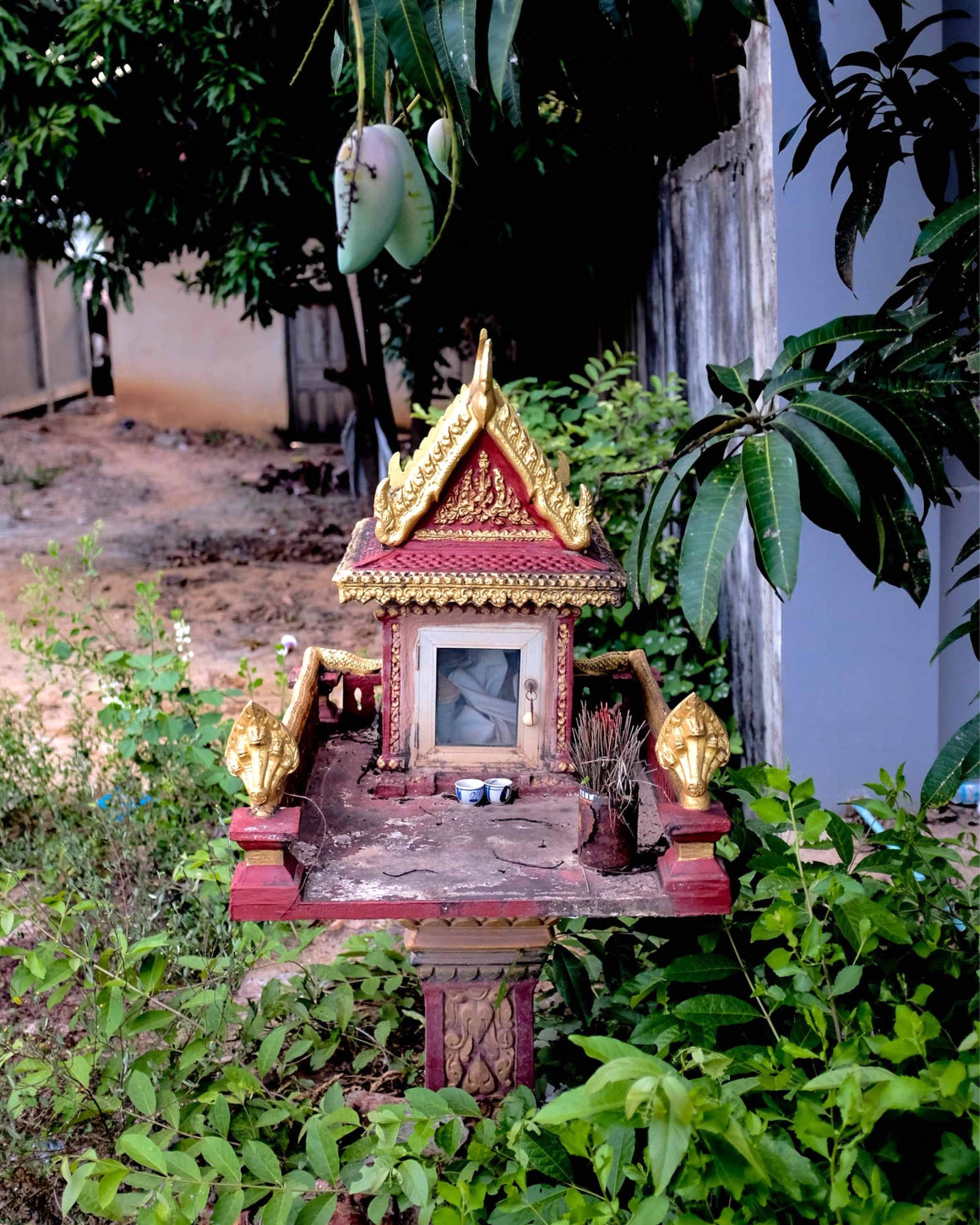
Vann left his contemplative angst at the river’s edge and began walking to the café to join Ngo and Sayed. Seven years had passed since they all arrived in Paris on a Gouvernement de la France scholarship.
As close friends, they often found themselves side-by-side sketching, painting, and studying the works of great Roman, Greek and French architectural styles.
Ngo’s uncle was the famous Le Duc Tho, the Vietnamese freedom fighter affectionately known as the “Hammer” on account of his uncompromising revolutionary fervor.
The Hammer spent most of Ngo’s adolescence imprisoned in a cage in the South China Sea. Nevertheless, the French guards had the inmates perform Molière plays, improving their minds with good French literature in fulfillment of their civilizing mission.
Maybe it was his uncle’s penchant for French theater that sowed Ngo’s early interest in scenography, eventually putting him on the same steamship as Vann on their way to Paris.
As he neared the Boulevard Saint-Germain, Vann recalled the scrutinizing glances of the passengers on the train bound for Marseille last month. Ngo had insisted on paying a visit to Unité d’Habitation - it was the last time the three were together.
It wasn’t the novelty of the piloti that struck a chord in Vann, it was the reference to an architecture of his homeland. Though the wooden stilt-raised structures of his childhood were not reinforced with steel and concrete, a rush of familiarity surged through him as he passed under the cool shadow of the building’s open ground floor and ascended up its exterior walkways. Had Le Corbusier spent time in Indochine? He wondered.
Standing on the rooftop, observing the city from a birds-eye view, a hunger inside of Vann swelled. He heard his father’s voice, “សង្គមរាស្ត្រនិយម Sangkum Reastr Niyum awaits you”. What form shall he give it? The vision was becoming clearer.
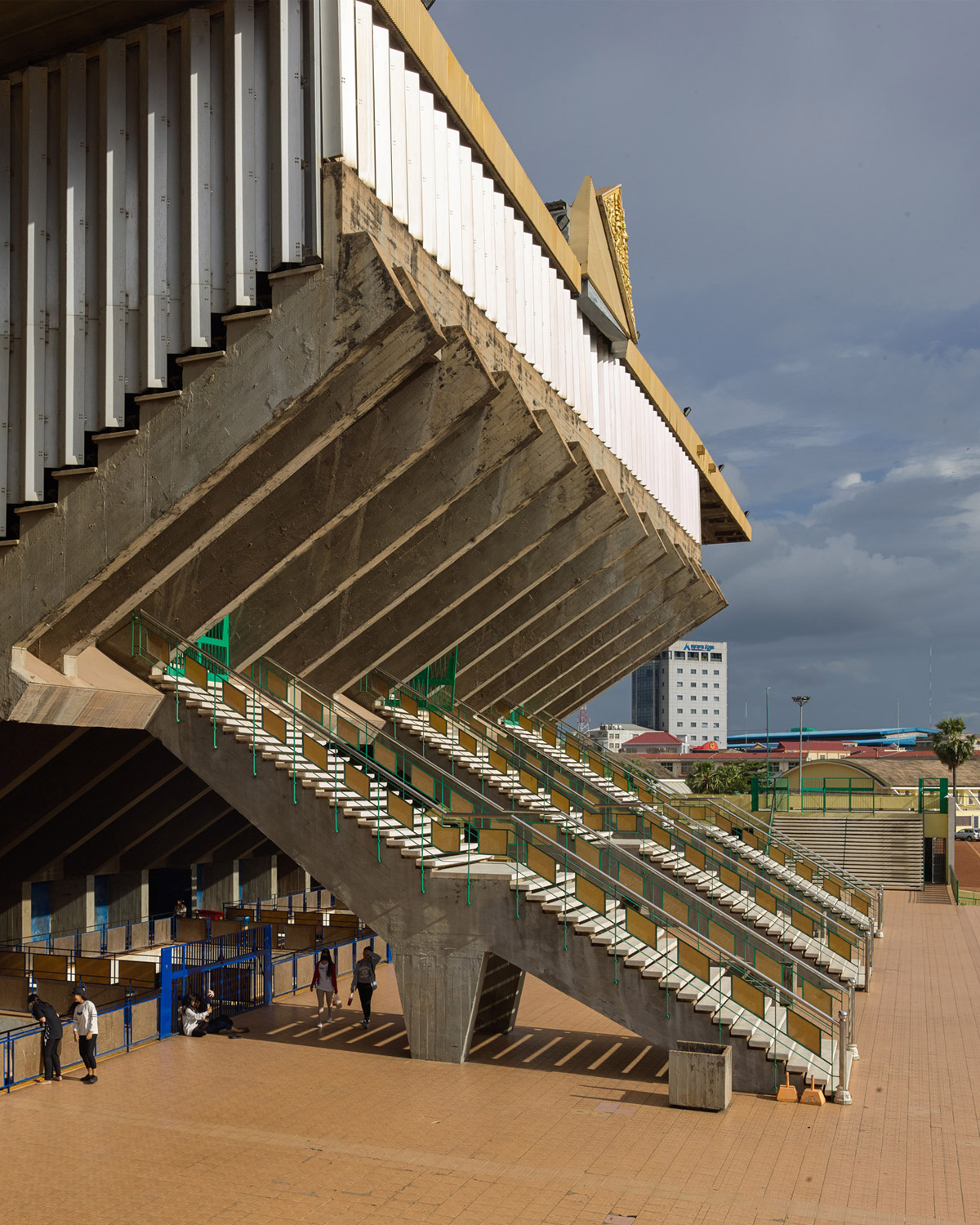
It was dark by the time he reached the Café de Flore. His two companions were seated under the vestibule in the red glow of a heat lamp. Plumes of smoke amidst a sea of bodies wafted from the tables surrounding them. Young men and women chattered into the night.
Traversing the sidewalk, Vann caught the gaze of Henri, from Arretche’s atelier, and seated next to him was an unfamiliar face. The man was introduced as Richard, an American writer here to complete his second novel. Seeing Vann, Sayed beckoned them over.
“So, what is this big news we’ve been waiting to hear?” Sayed asked once the five men settled into their cramped wicker chairs.
“I’m not going to Rome. I bought a ticket to Saigon to join my uncle” Ngo announced.
How could it be? Vann’s stomach lurched. He thought they were just here to bid a temporary farewell to Ngo, on his way to live and study at the Villa Medici - the first Indochine to ever win the coveted residency!
“How can you expect me to watch from a distance when the deafening cries for freedom are finally being heard all around the world?” Ngo continued, clenching his fists with urgency.
“Freedom? The only freedom is in our craft, my friend.” Sayed replied despondently. He had no intentions of returning to a partitioned India. Daily news of the violent outbursts of nationalist fervor sweeping his homeland beckoned him deeper into the solitude of his brushstrokes. For now, Van-Gogh, Cezanne, and Gaugin were his gods.
“But, isn’t it dangerous?” Henri wondered aloud. “Just last week I read over one thousand people were killed by a Viet ambush”, he pressed.
At that point, the newcomer, Richard, began to laugh. “I wonder what the headlines in the Vietnamese press were.” He said to Ngo while taking a drag from his PallMall.
Then, leaning forward with his palms clasped on the table, he continued, “I’m curious - for how long have you all been at the école together?”
“Seven years,” the four responded in unison.
“So, you must know the proportions of the Vitruvian man?” The American’s thick-rimmed glasses magnified the golden brown of his exacting eyes as he posed the question to the table.
“Why is that relevant?” Sayed chuckled bewilderingly.
“It’s a serious question.” Richard insisted.
“The complete face,” Sayed began, “that is, chin to hairline, is one tenth of the human body.” Then, spreading his thumb and pinky fingers wide and bringing them to Henri’s face, “the head - chin to the crown - measures one eighth.”
“Fascinating. And that Corbu fellow. What’s his name?” Richard pointed to Vann, “The Maligned Man?”
“You mean The Modular Man?” Vann corrected him.
“Right! The Modular Man. What are his proportions?” Richard directed his questioning back to Henri.
“He is one-and-three-quarter meters tall. Two-point-two-six meters with his arms overhead” Henri said, raising his hand and accidentally beckoning a waiter to the table.
“Now, how tall - if I may ask - is your mother?” Richard turned back to Vann.
“And what’s her shoe size?” Sayed said, a grin forming in the corners of his mouth.
At that moment, Vann recalled the figure drawing lessons they all attended in their early years of instruction. Hard as he tried to depict the form of the male nude, the tutors were unimpressed by his incongruous results.
“It’s because their proportions are all off!” Ngo yelled when Vann finally came to his friends in desperation.
“Of course they are! I bet you there’s not a Cambodian alive with feet that big!” Sayed chimed in whilst gesturing at the model’s toes with a flick of his pencil.
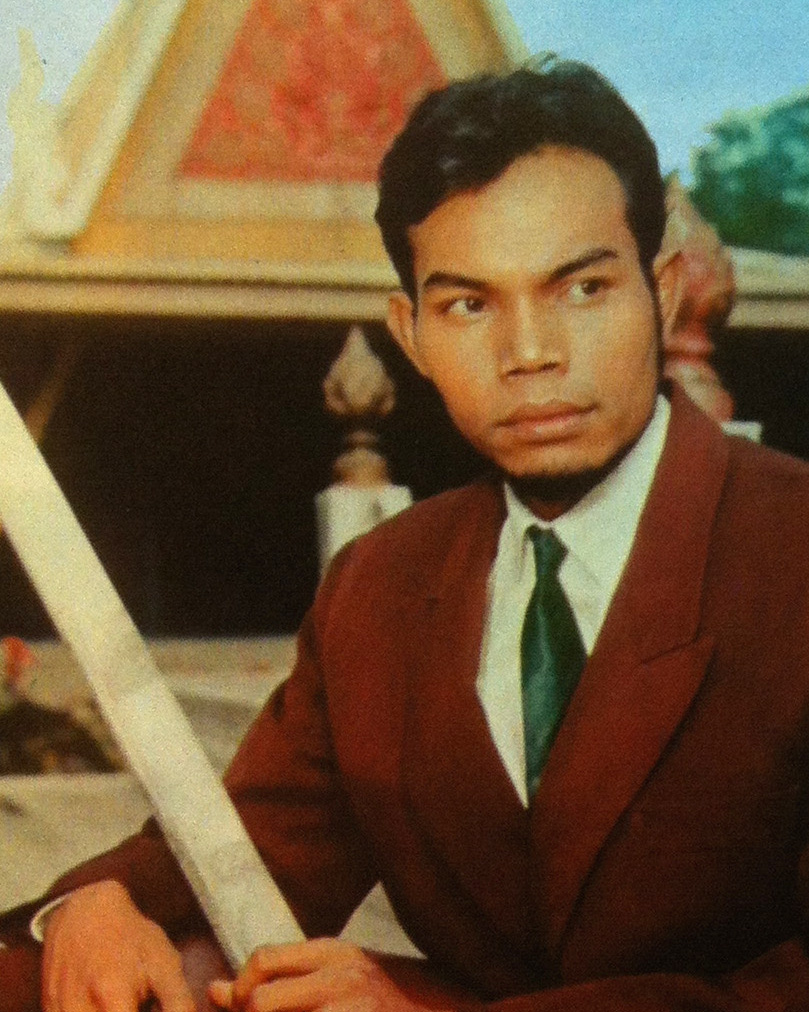
Vann emerged from the cafe to a deserted Rue Malaquais. He was walking home, bending the tattered corners of his father’s letter in his pocket when the wispy fragments of last night’s vision returned with piercing clarity.
In his dream, Vann was standing in front of a magnificent slab of sandstone. The ground seemed to tremble from the force of wooden mallets hitting metal as an army of វិស្វករ visvakar chipped away at the temple’s facade.
“កូរសមុទ្រទឹកដោះ Kaur Samoutr Tukdaoh” Vann whispered under his breath as he continued down the Pont Des Arts, the memory holding steady in his mind’s eye.
Beyond him, Vann could see elephants, wild boars, monkeys, and rabbits, clusters of thatched roofs surrounded by palm trees, water buffalo swatting at flies in the verdant rice fields, and the delicate pink of lotus flowers illuminating the dark green shadows cast by round lily pads.
Emerging from the dusty cloud of sandstone, an អាចារ achar came walking carrying a silver bowl in his weathered palms. Into it, he dipped a bundle of twigs and splashed water onto Vann’s forehead, which was now bowed with palms pressed and thumbs resting at his nose.
A thunderous chant erupted from the contours of the old man’s toothless mouth, which were barely moving as he recited:
“Just as rivers with water
Entirely fill up the sea,
So will what’s here been given,
Bring blessings to departed spirits.
May all your hopes and all your longings
Come true in no long time”.
The End
For more information, please visit The Vann Molyvann Project
Berea College Student Craft
September 26, 2019Today, Student Craft is no longer just a factory of student labor, as it had been for nearly 100 years, but is transforming into an academic program producing open-ended products.
Najha Zigbi-Johnson for Volume Gallery
September 8, 2023Within this spiritual and cultural context, I engage and understand the most recent work of industrial designer Stephen Burks, who has created a collection of modern altars entitled Spirit Houses.
Disegno Journal
February 15, 2021With the romanticism of a wiser woman looking back on a fleeting youth, Joan Didion once described New York City as the “shining and perishable dream itself”.
Perez Projects Presents BD Barcelona: A New Perspective, 50 Years of Design
April 16, 2023By Diana Budds for New York Magazine
November 7, 2023Stephen Burks Wants to Finish a 20-Year-Old Conversation With Fran Lebowitz.
The New York Times by Lauren Messman
April 15, 2024You can always see where you would like to sit at the annual festival of furnishings and household objects.
Living Corriere Della Sera No. 4
Creative Survival Tactics: At Home with Malika Leiper & Stephen Burks by Olivia Fincato
"We transformed a former bakery into a modernist gallery."
Milan Furniture Fair
April 17, 2023New Kida dining chair to be presented during 2023 Milan furniture fair
By Malika Leiper for Disegno #34 x Het Nieuwe Instituut Design Drafts #1
September 21, 2022How to begin writing about design if the word does not even exist?
Stephen Burks: Shelter in Place Book Review in Untapped Journal by Francesca Perry
February 13, 2023The book Shelter in Place considers the possibilities, and the precedents, of the designer’s inclusive approach to creating objects for the home.
By Stephen Burks for the Oak issue of Material Intelligence online, edited by Glenn Adamson.
June 2, 2022Yes, the mighty oak tree, the stuff of legends, is also the traditional
basket maker’s wood of choice in Appalachia, as elsewhere
in the eastern United States.
By Dennis Scully & Fred Nicolaus for Business of Home
January 23, 2023Stephen Burks wants to open the doors of the design industry.
Stephen Burks for Goodee
September 1, 2019"I found myself back in school in the midst of a year-long fellowship, where I met Malika."
By Vasia Rigou for The Chicago Reader
September 19, 2023The Volume Gallery exhibition connects past, present, and future through reverent design.
About
Stephen Burks Man Made is a hands-on collaborative design studio deeply invested in the transformative power of craft techniques that challenge the limits of new technologies within industrial production.
We believe in a pluralistic vision of design that is inclusive of all cultural perspectives and backgrounds.
We bring the hand to industry through a community-driven, workshop-based practice.
Our projects include furniture, lighting, interiors, exhibitions, and product design.
We are Stephen Burks (Principal), Malika Leiper (Cultural Director), Vara Yang (Design Consultant), and Fridolin Jeger (Design Assistant).
Our solo exhibition Stephen Burks: Shelter in Place, formerly at the High Museum of Art in Atlanta (September 16, 2022 - March 5, 2023) is part acclaimed mid-career survey and part commissioned speculative project presenting the last decade of professional practice alongside new expressions of radical domesticity through handcrafted industrial design.
Most recently, Stephen Burks: Spirit Houses opened at Volume Gallery in Chicago and Stephen Burks: Shelter in Place (November 19. 2023 - April 16, 2024) opened at the Philadelphia Museum of Art where Stephen became the first African American to receive the Collab Design Excellence Award.
Follow us on Instagram @stephenburksmanmade and contact us at info@stephenburksmanmade.com.
Stephen Burks
Chicago native, Stephen Burks is an industrial designer, product development consultant, and educator whose innovative approach to design synthesizes craft, community, and industry. Independently and through association with various non-profits, he has collaborated with artisans and craftspeople in over ten countries on six continents. His socially engaged practice seeks to broaden the limits of design consciousness by challenging who benefits from and participates in contemporary design.
Stephen and his studio, Stephen Burks Man Made, have been commissioned by many of the world’s leading design-driven brands to develop collections that engage hand production as a strategy for innovation to express a more pluralistic vision of design including BD Barcelona, Cappellini, Dedon, MASS Design Group, Missoni, & Roche Bobois.
He has had solo exhibitions and led curatorial projects at the Studio Museum in Harlem (Stephen Burks Man Made, 2011), the Museum of Art & Design (Stephen Burks, Are You a Hybrid, 2011), and the High Museum of Art (Stephen Burks: Shelter in Place, 2022).
He has been visiting faculty and a strategic consultant to academic institutions around the globe and taught architecture and design at Berea College, Columbia University GSAPP, ECAL, the University of Arkansas Fay Jones School of Architecture & Design, and the Harvard University Graduate School of Design.
Stephen is the only African-American to win the Smithsonian Cooper Hewitt National Design Award in Product Design and the only industrial designer to be awarded the prestigious Loeb Fellowship at the Harvard Graduate School of Design.
Malika Leiper
Originally from Cambodia, Malika Leiper is interested in the culture of design across various disciplines with a particular focus on emergent contexts in Southeast Asia.
After completing her master’s in urban planning at Harvard’s Graduate School of Design, she consulted with restaurants, non-profits, local governments, and museums on research and strategies to build creative cultural capacity, often through public programming and community engagement.
She approaches design as a collaborative process of translating knowledge and insights from different worlds into one common language through technical, moral and utopian applications.
Most recently, Malika has contributed to Disegno Journal #34 as a Het Nieuwe Instituut inaugural emerging writing fellow with her first published short story, When The Words Don't Exist.
Vara Yang
Vara Yang joined Stephen Burks Man Made as an industrial designer in New York in 2017.
Before working at Stephen Burks Man Made, she worked with several startups helping them bring their products and services to the market, including smart home devices, smartwatches, smart jewelry, and 3D printers.
Now an independent consultant based in Rotterdam, she continues to work with the studio on projects at various scales from furniture design to packaging to exhibitions.
Vara received her bachelor’s in design engineering from National Cheng Kung University in Taiwan and her master’s in Industrial Design from the Rhode Island School of Design.
- 2023 Ancestors (Guardian) Friedman Benda
- 2023 Precioso Salvatori
- 2023 Spirit Houses Volume Gallery
- 2023 On New Cosmologies: Stephen Burks Approaches the Sacred Najha Zigbi-Johnson for Volume Gallery
- 2023 The Sacred and Profound By Vasia Rigou for The Chicago Reader
- 2022 Shelter in Place Prototypes High Museum of Art, Atlanta
- 2023 Kida Dining Chair Dedon
- 2023 A Casa Di Burks Living Corriere Della Sera No. 4 Creative Survival Tactics: At Home with Malika Leiper & Stephen Burks by Olivia Fincato
- 2023 BD Barcelona 50th Features Grasso Perez Projects Presents BD Barcelona: A New Perspective, 50 Years of Design
- 2023 Zenith Stephen Burks Man Made
- 2018 Grasso Ceramics BD Barcelona
- 2020 Kida Dedon
- 2019 Kida in Production Dedon
- 2023 Business of Home Podcast By Dennis Scully & Fred Nicolaus for Business of Home
- 2018 Grasso BD Barcelona
- 2008 Horizon Tod's
- 2017 The Others Dedon
- 2019 Islands Living Divani
- 2019 Home as Project Stephen Burks for Goodee
- 2021 Welcome to Contemporaries Disegno Journal
- 2012 Dala Dedon
- 2013 Anwar Parachilna
- 2022 When The Words Don't Exist By Malika Leiper for Disegno #34 x Het Nieuwe Instituut Design Drafts #1
- 2023 Curbed 21 Questions By Diana Budds for New York Magazine
- 2021 Anywhere Kitchen USM Modular Furniture
- 2022 The Making of the Community Basket By Stephen Burks for the Oak issue of Material Intelligence online, edited by Glenn Adamson.
- 2021 Friends & Neighbors Salvatori
- 2023 How Stephen Burks “Future-Proofs” Craft Stephen Burks: Shelter in Place Book Review in Untapped Journal by Francesca Perry
- 2019 The Crafting Diversity Initiative Berea College Student Craft
- 2020 Pixel Blanket Berea College Student Craft
- 2020 Community Basket Berea College Student Craft
- 2013 Variations Calligaris + P:S
- 2015 Ahnda Dedon
- 2014 The Traveler Roche Bobois
- 2023 Shelter In Place The High Museum of Art
- 2022 The Spruce Berea College Student Craft
- 2004 Missoni Mogu Fun Fun Missoni
- 2011 Are You A Hybrid? Museum of Arts & Design
- 2020 Making of Broom Thing Berea College Student Craft
- 2014 A Free Man The White Briefs
- 2015 Frame Calligaris
- 2018 Floats Bolon x BD Barcelona
- 2022 Stephen Burks: Shelter In Place Catalogue By Monica Obniski for High Museum of Art
- 2016 The Traveler Outdoor Roche Bobois
- 2023 Dedon Launches Kida Dining Chair Milan Furniture Fair
- 2017 Irregular Weaving A/D/O
- 2011 Roping Dedar Milano
- 2011 Stephen Burks: Man Made Studio Museum of Harlem
- 2013 Hidden Gem Harry Winston
- 2018 Trypta Luceplan
- 2020 Broom Thing Berea College Student Craft
- 2015 Senegalese Basket Workshop
- 2013 Variations Workshop Journal Calligaris & P:S
- 2021 Magniberg Magniberg & Caroline Tompkins
- 2023 Powerhouse Ceramics Design Fellowship Friedman Benda Gallery
- 2024 Clay Break University of Arkansas Art Ceramics Department
- 2018 BD x Bolon Workshop BD Barcelona & Bolon
- 2024 Taking a Moment to Lounge at Milan Design Week The New York Times by Lauren Messman
